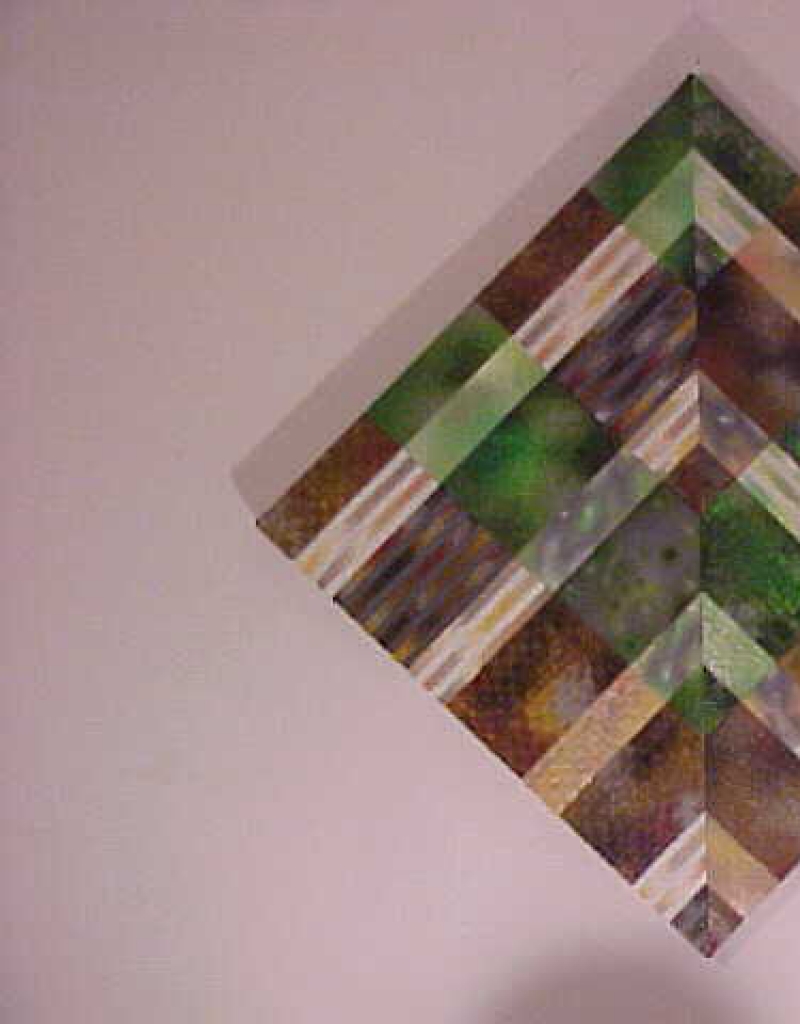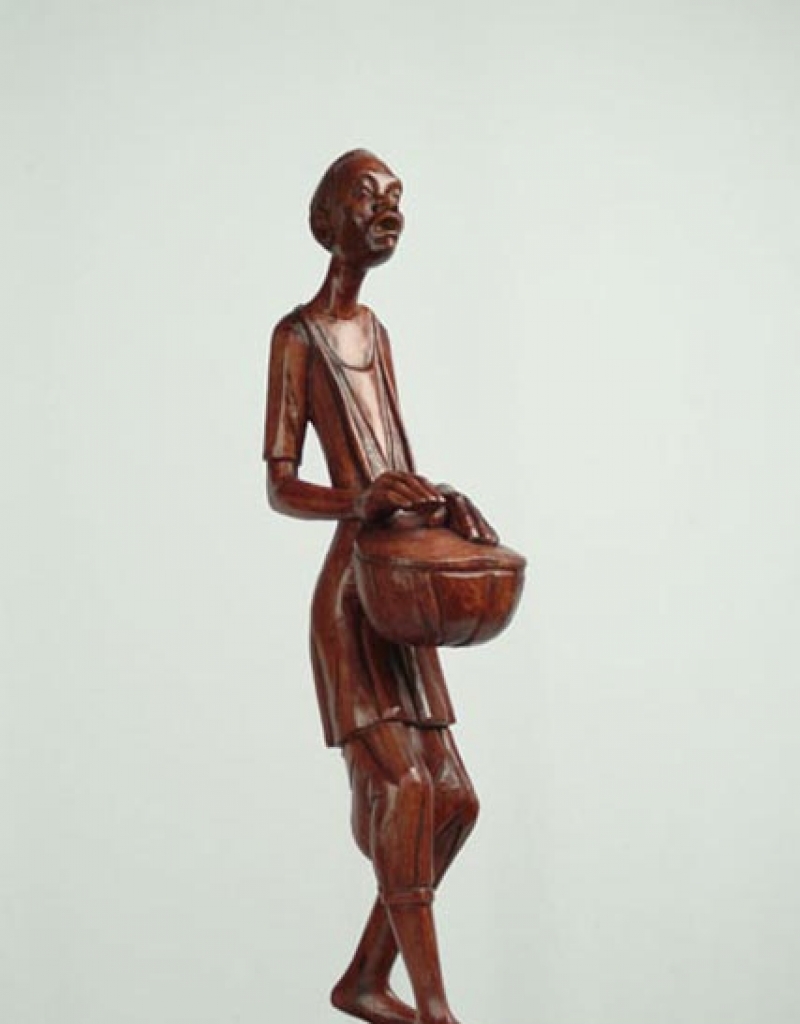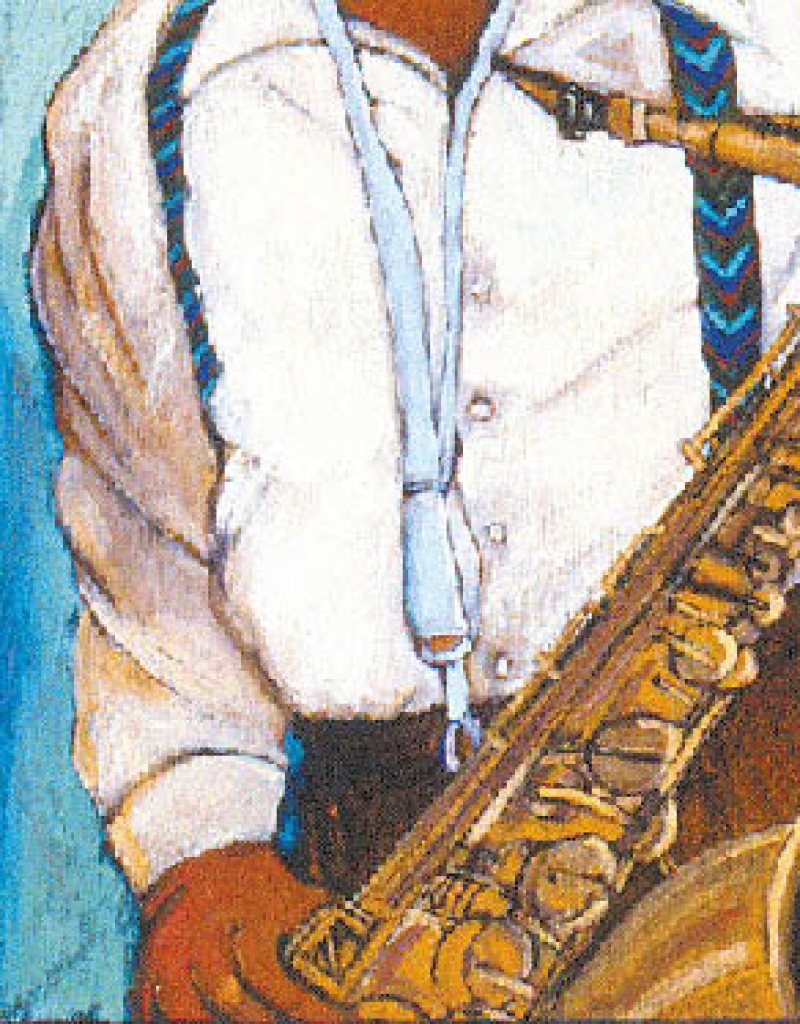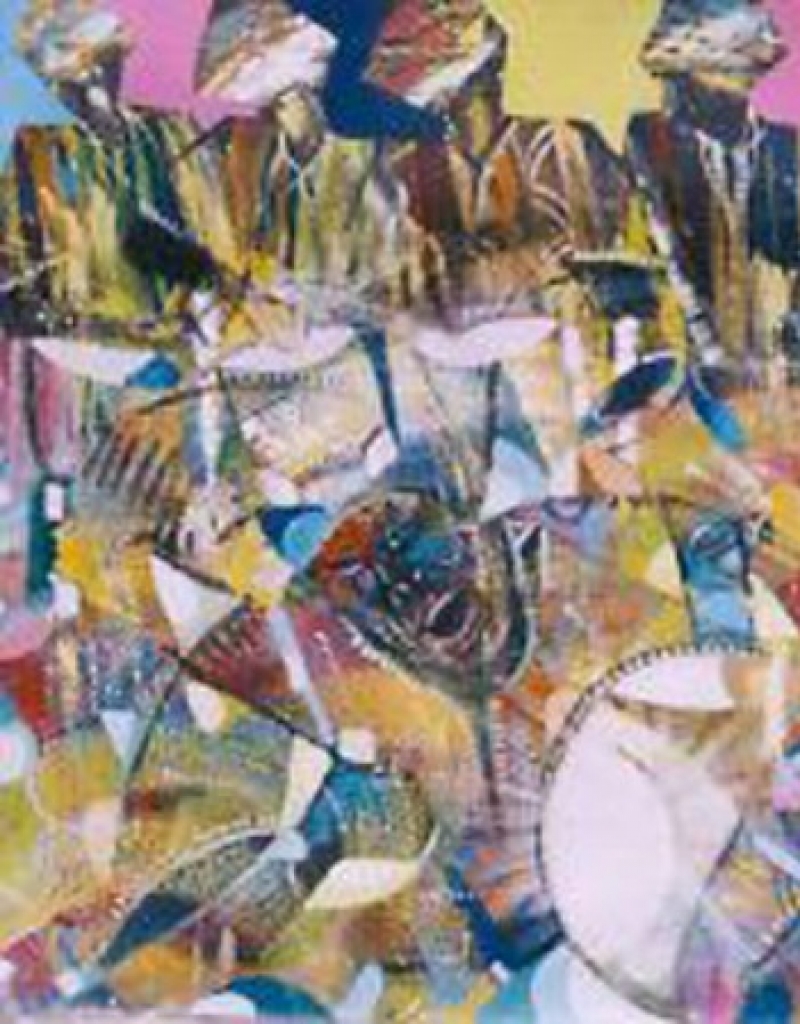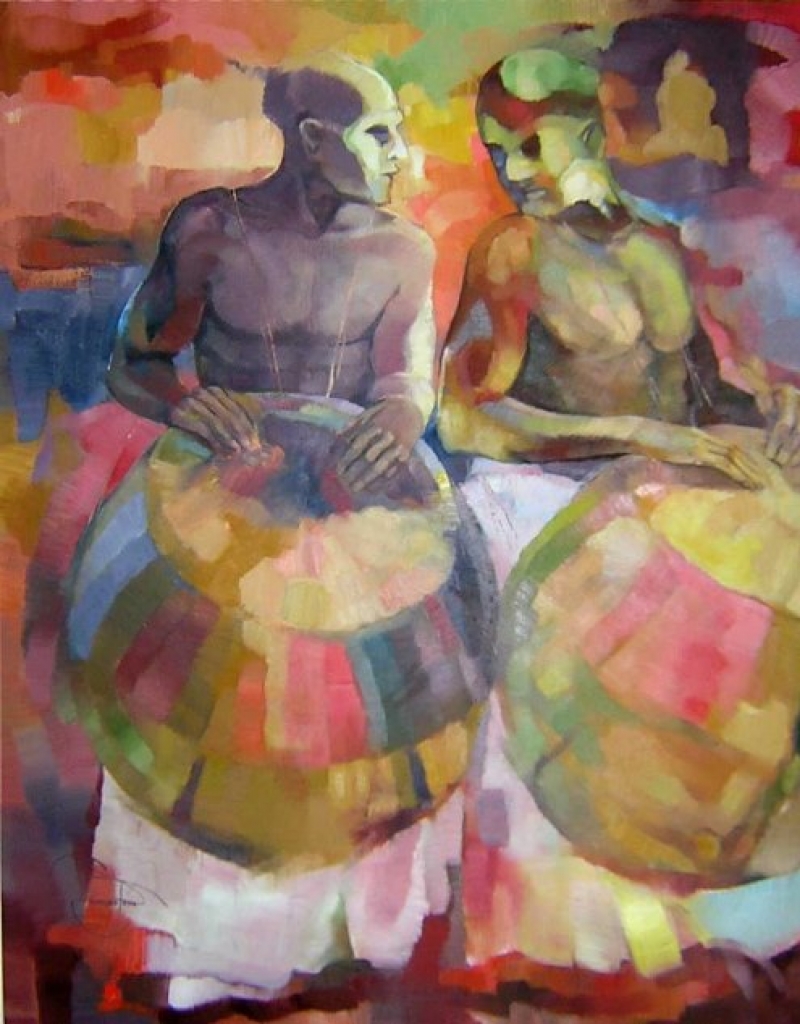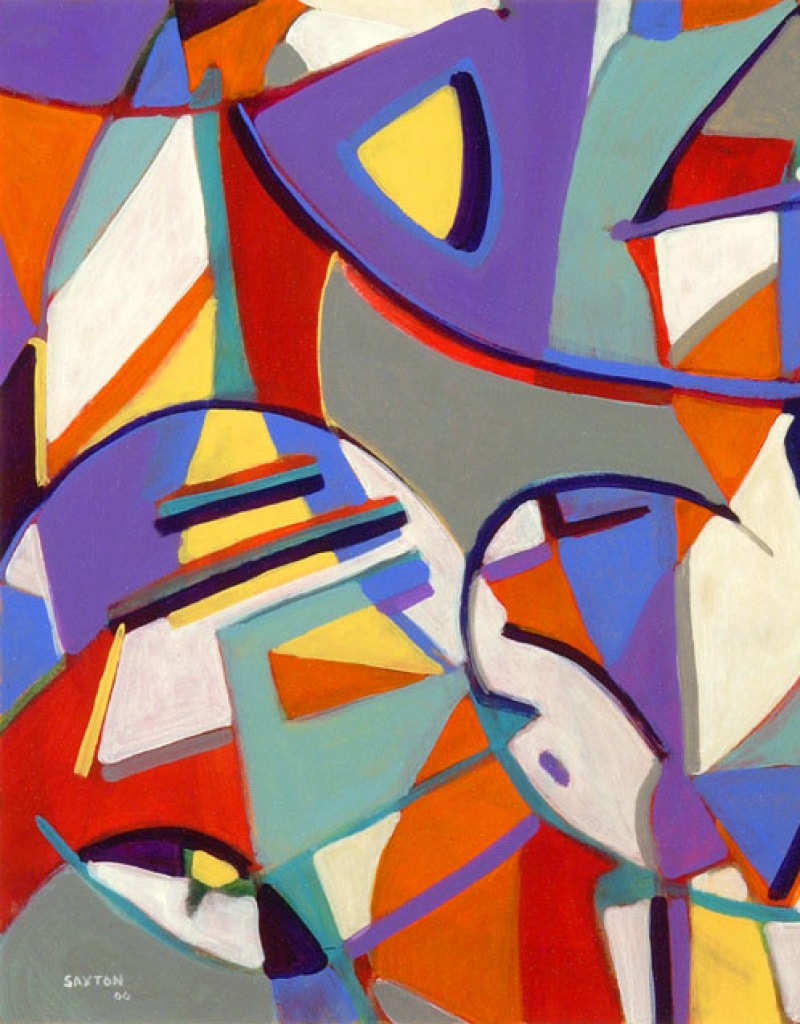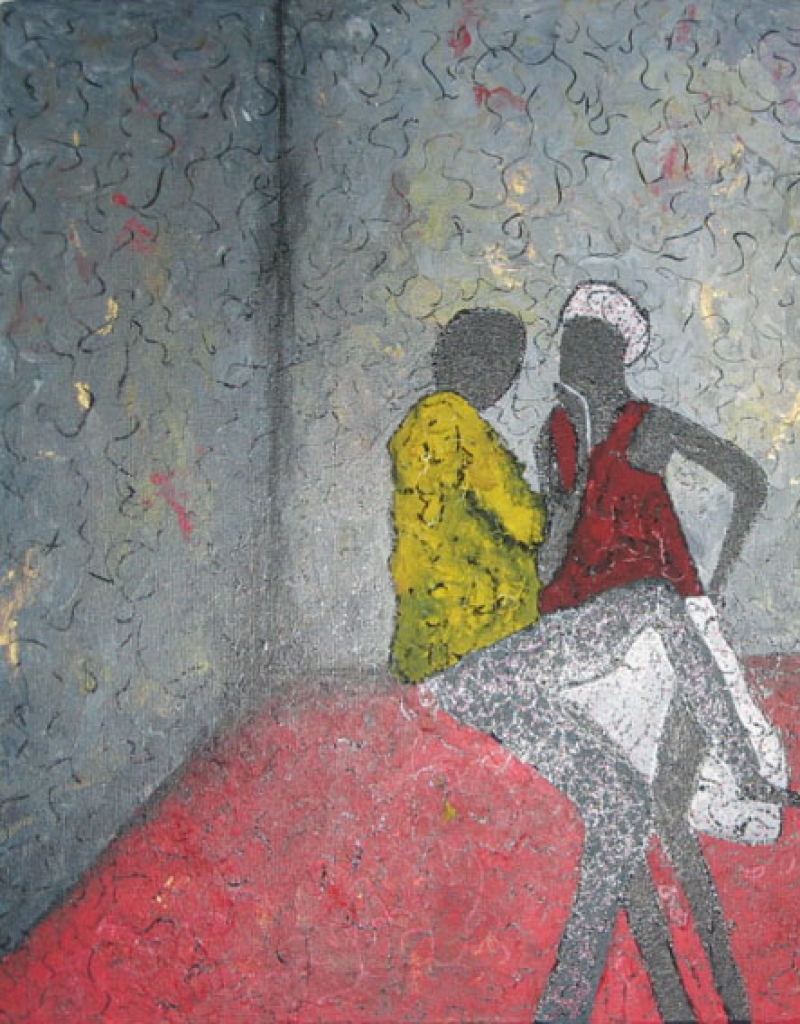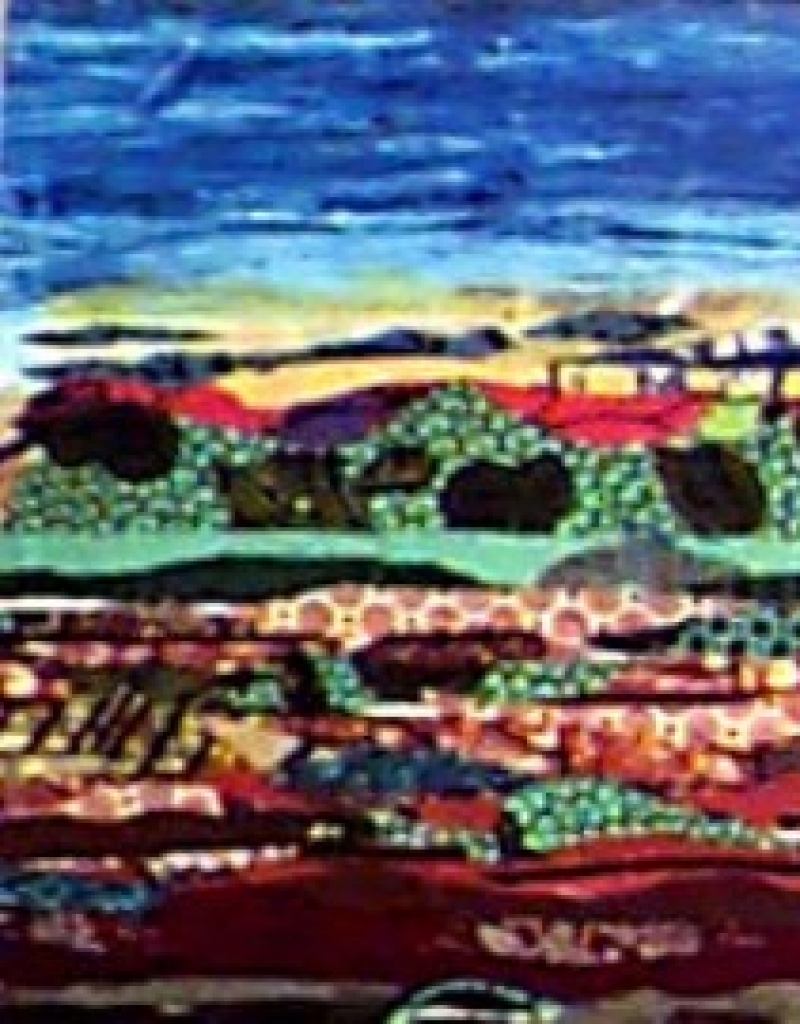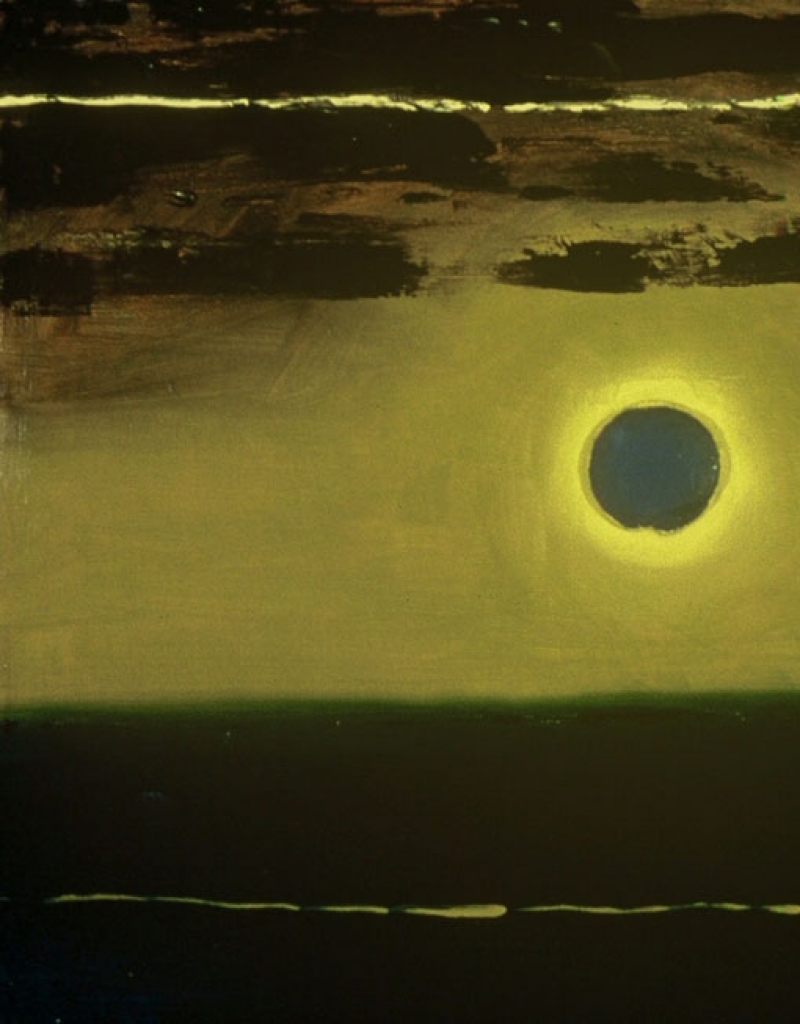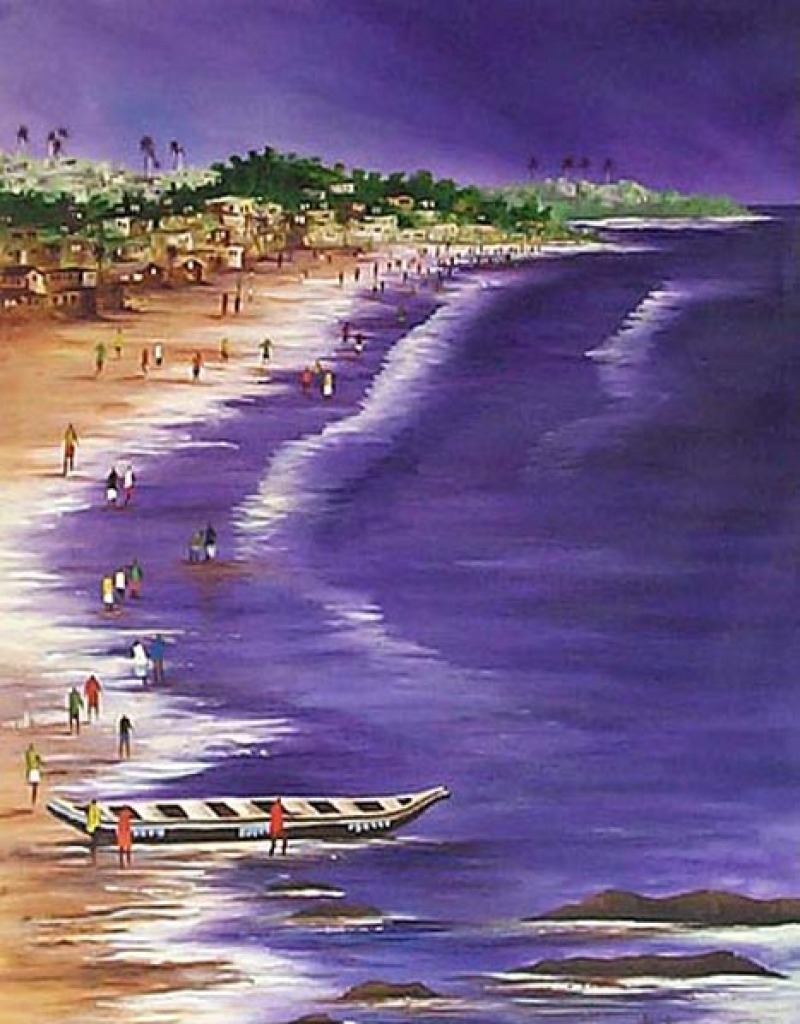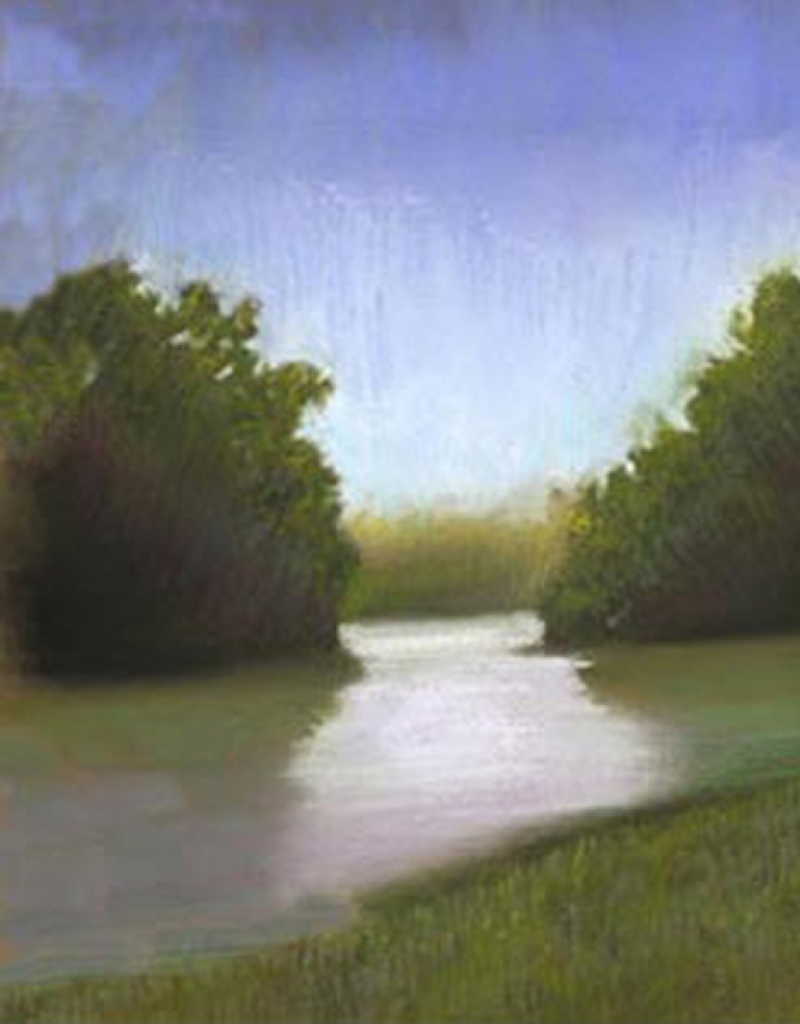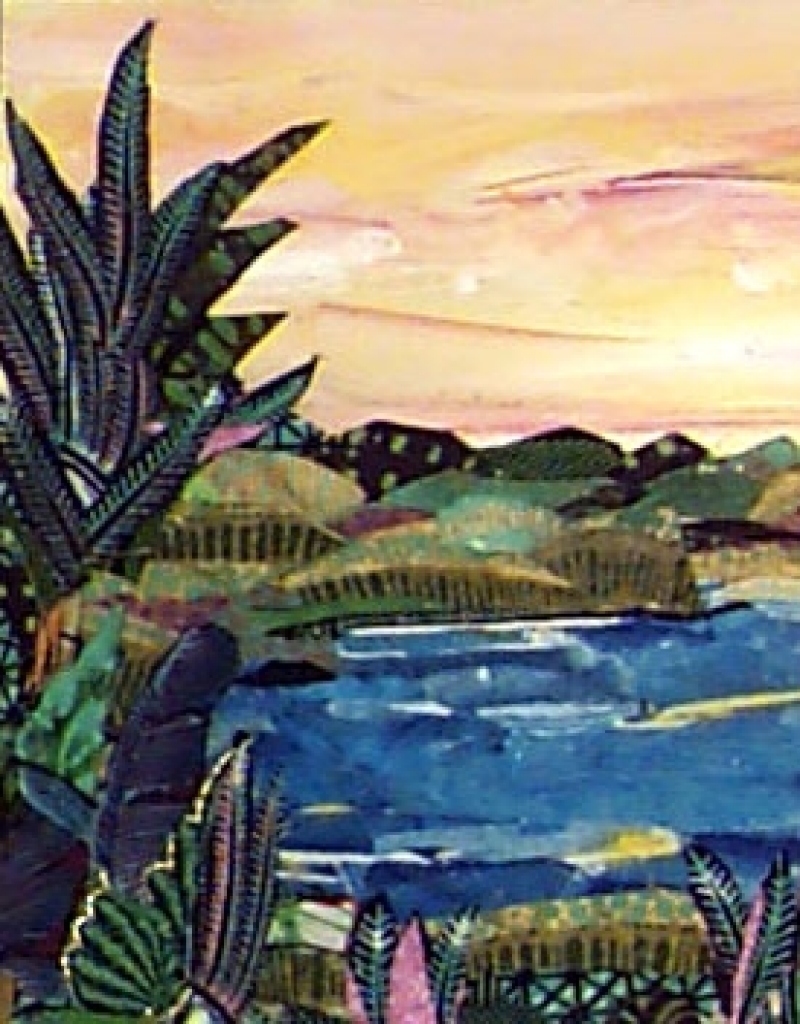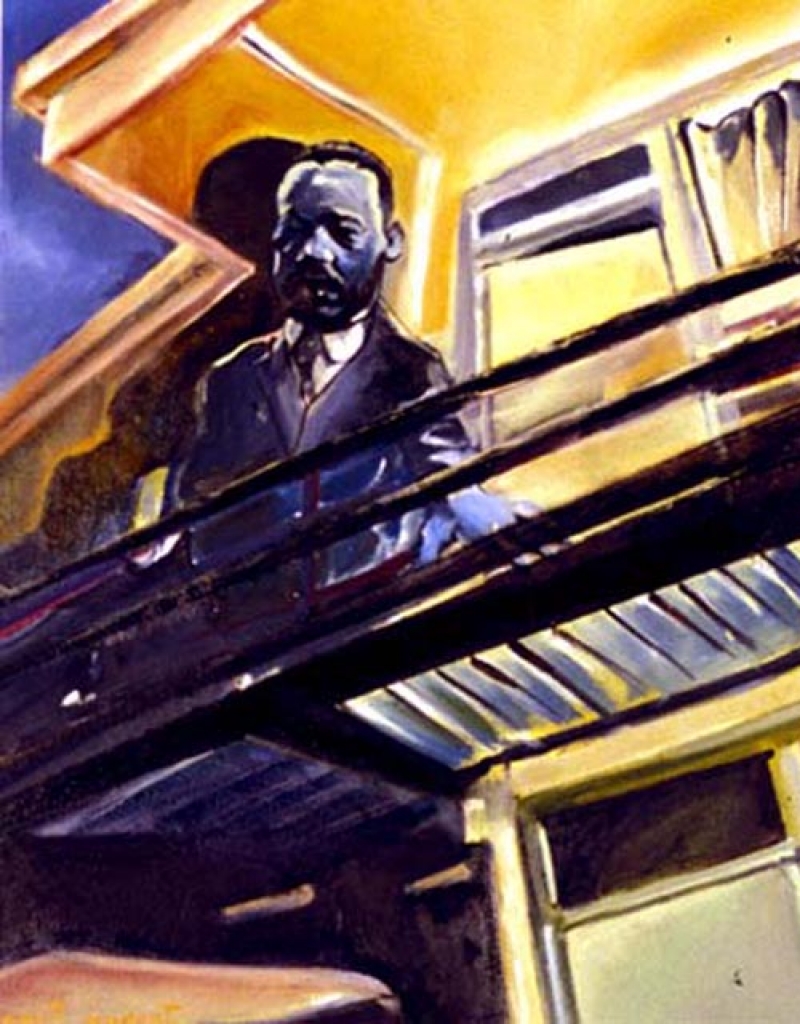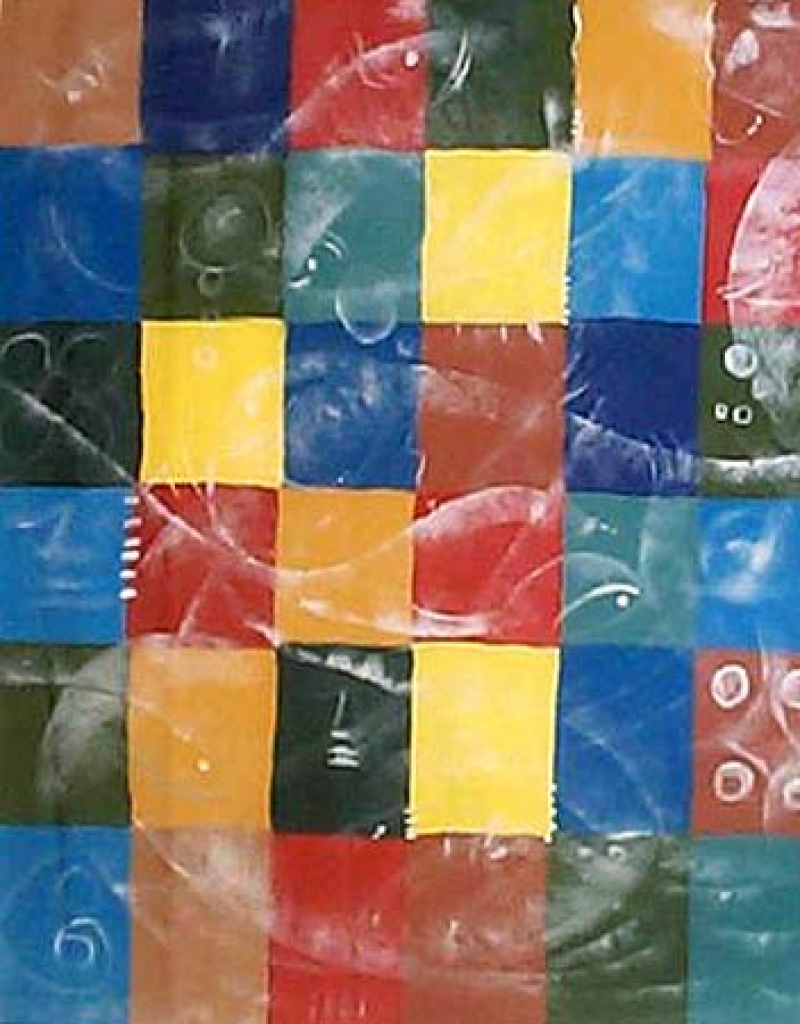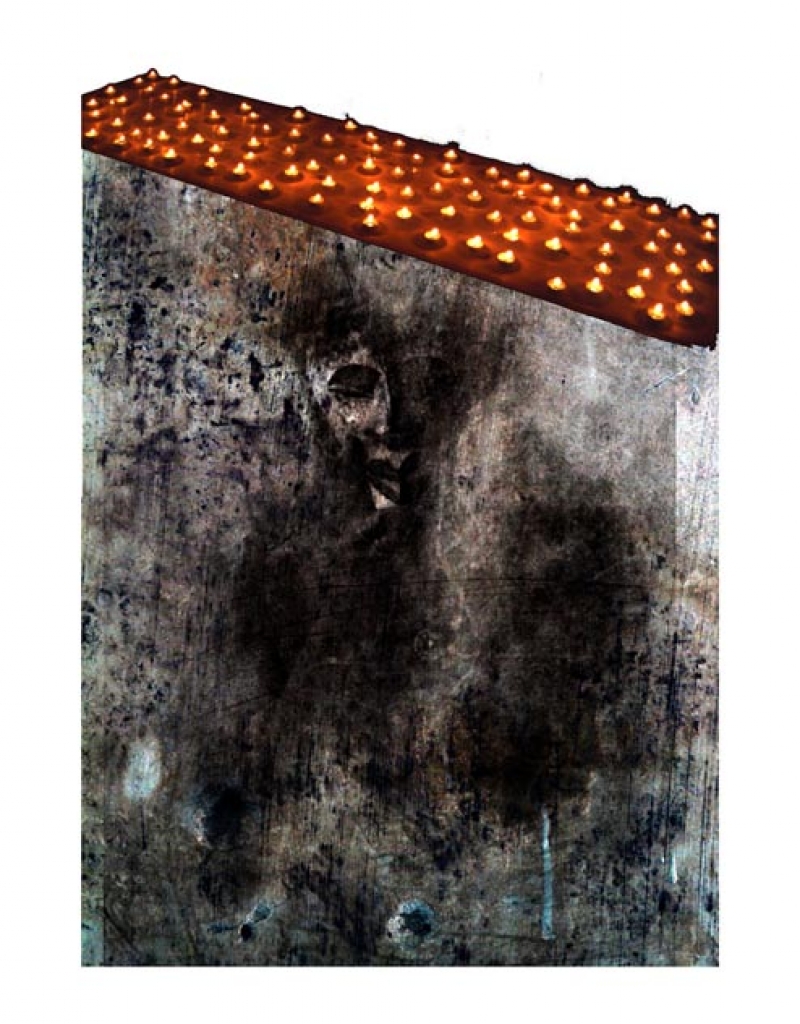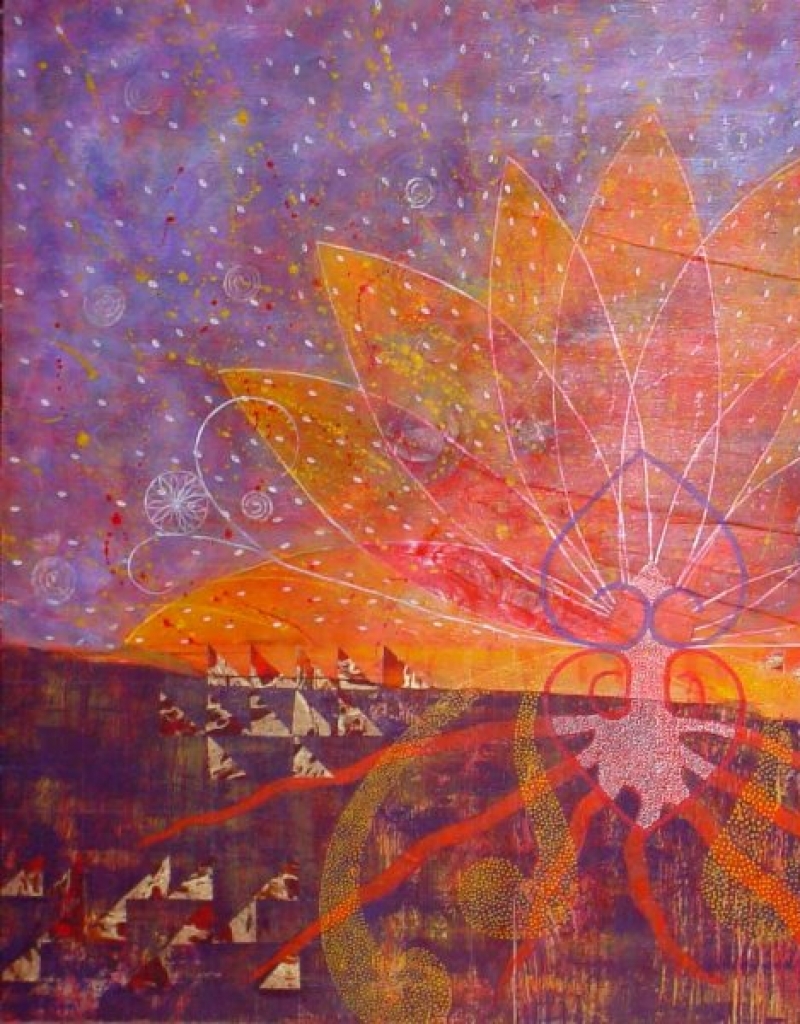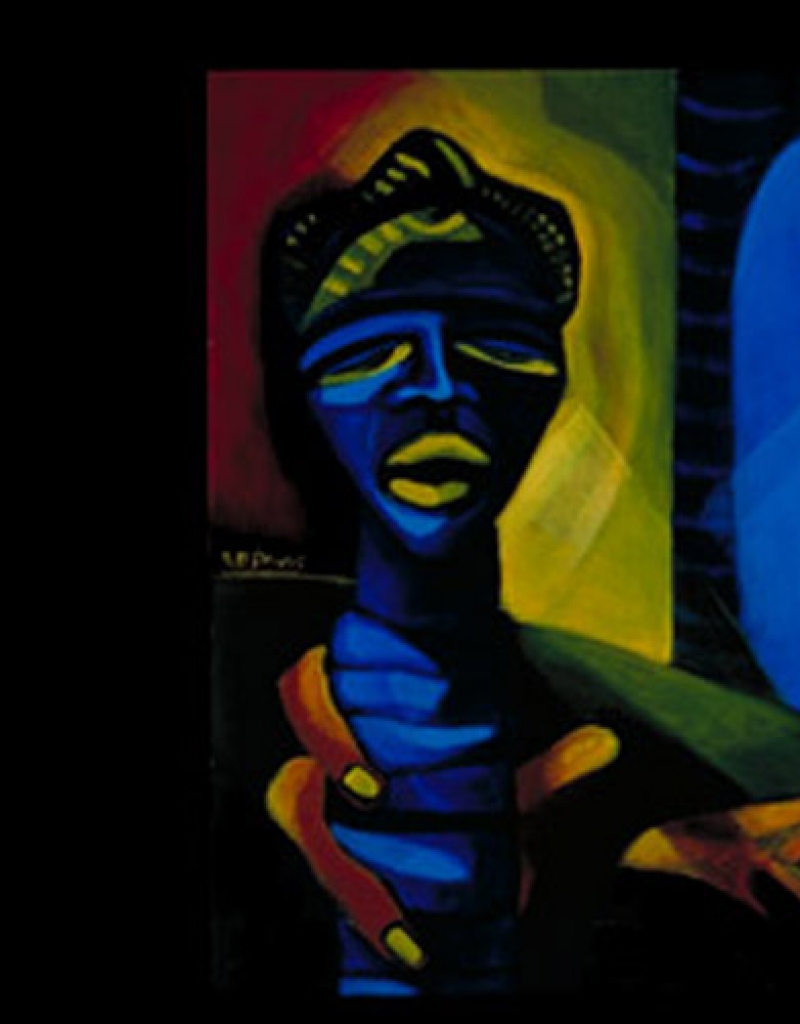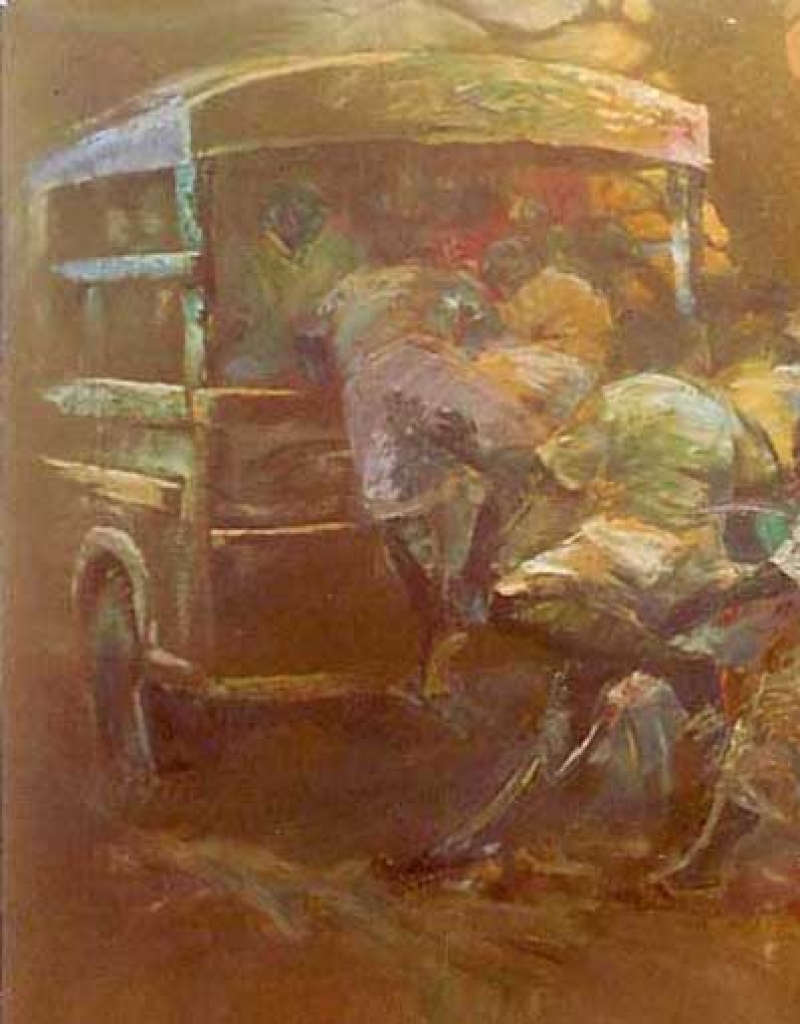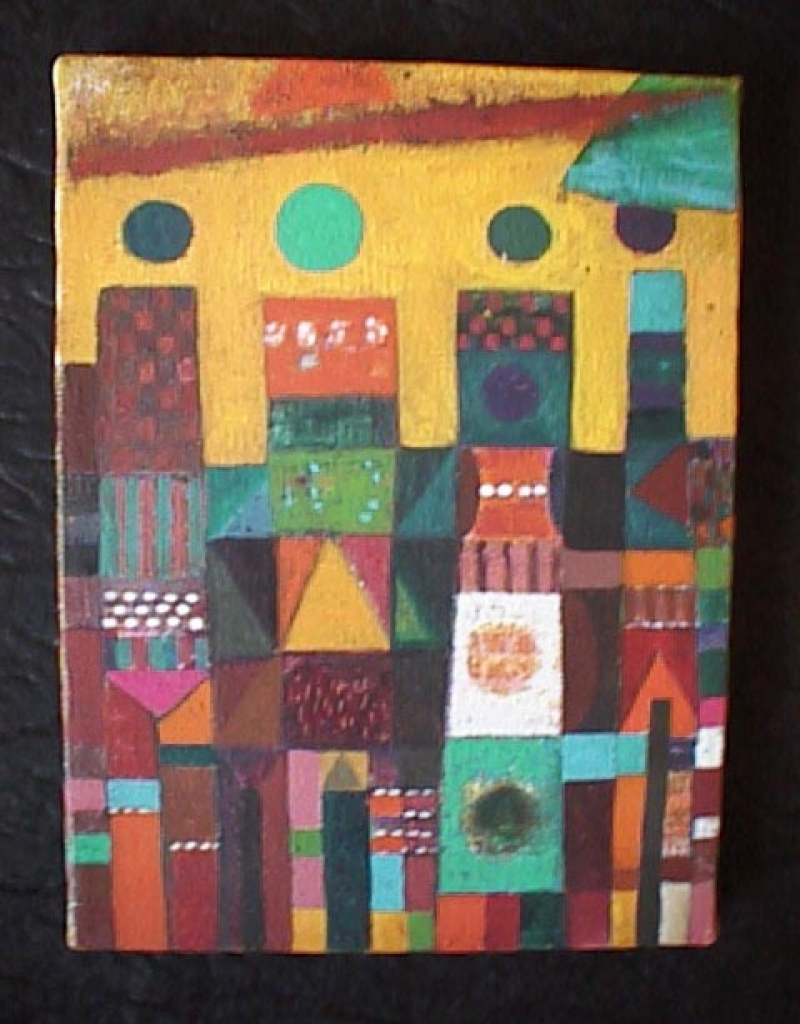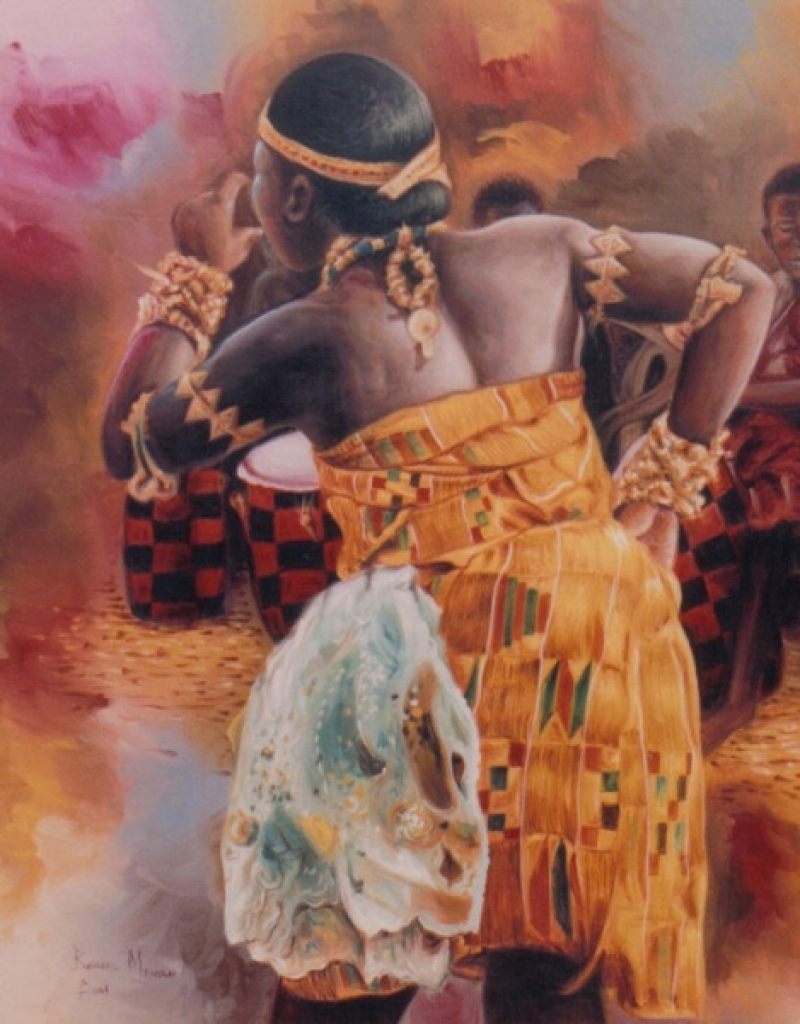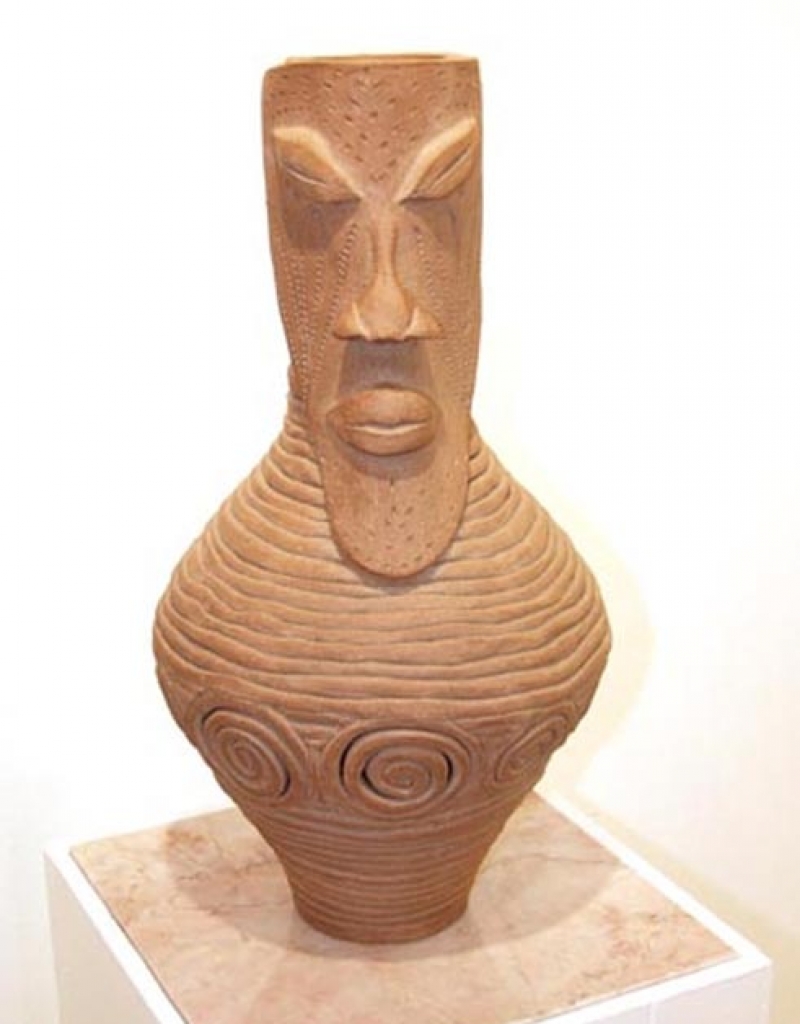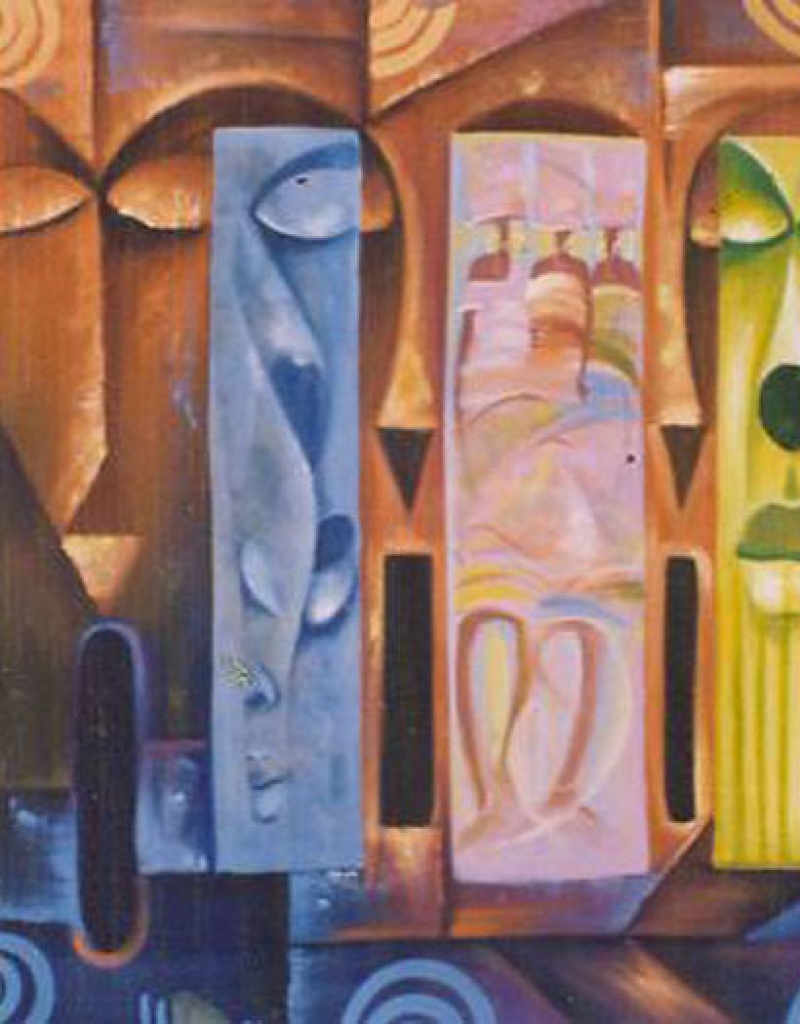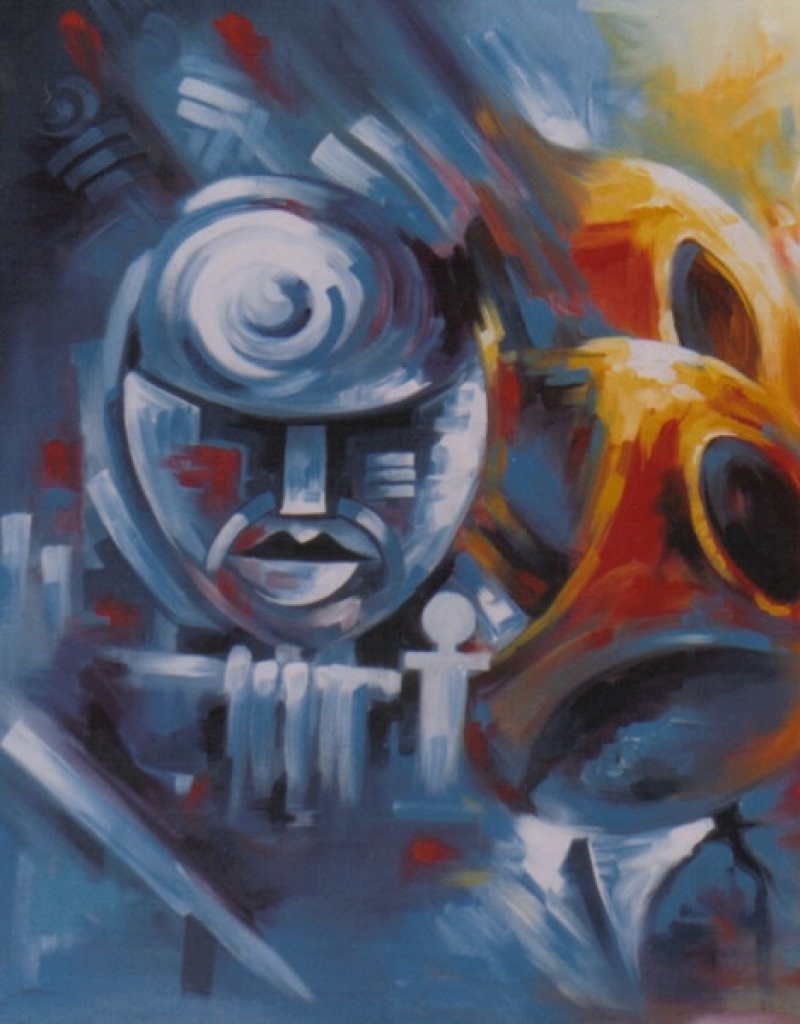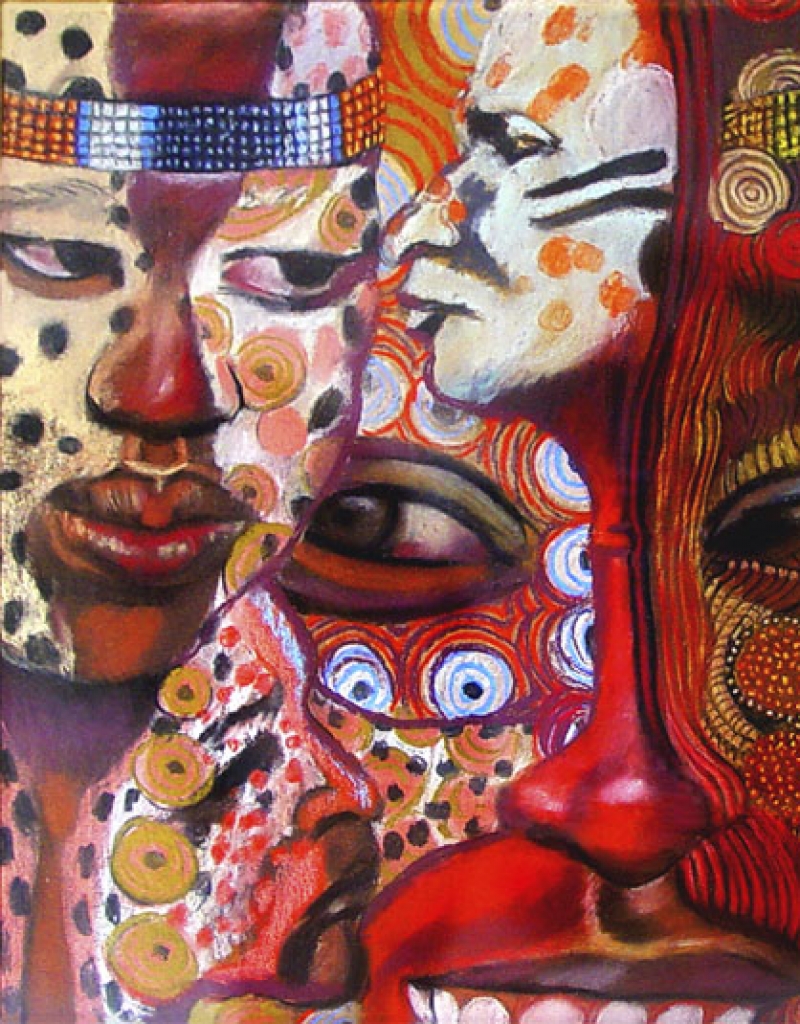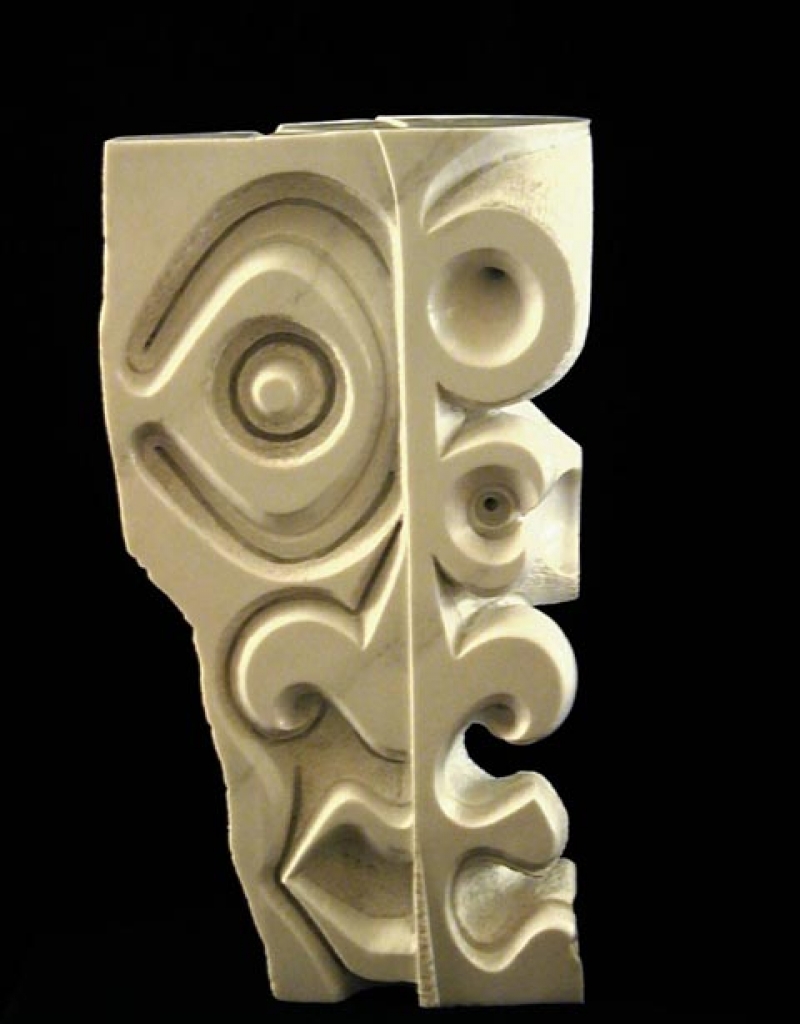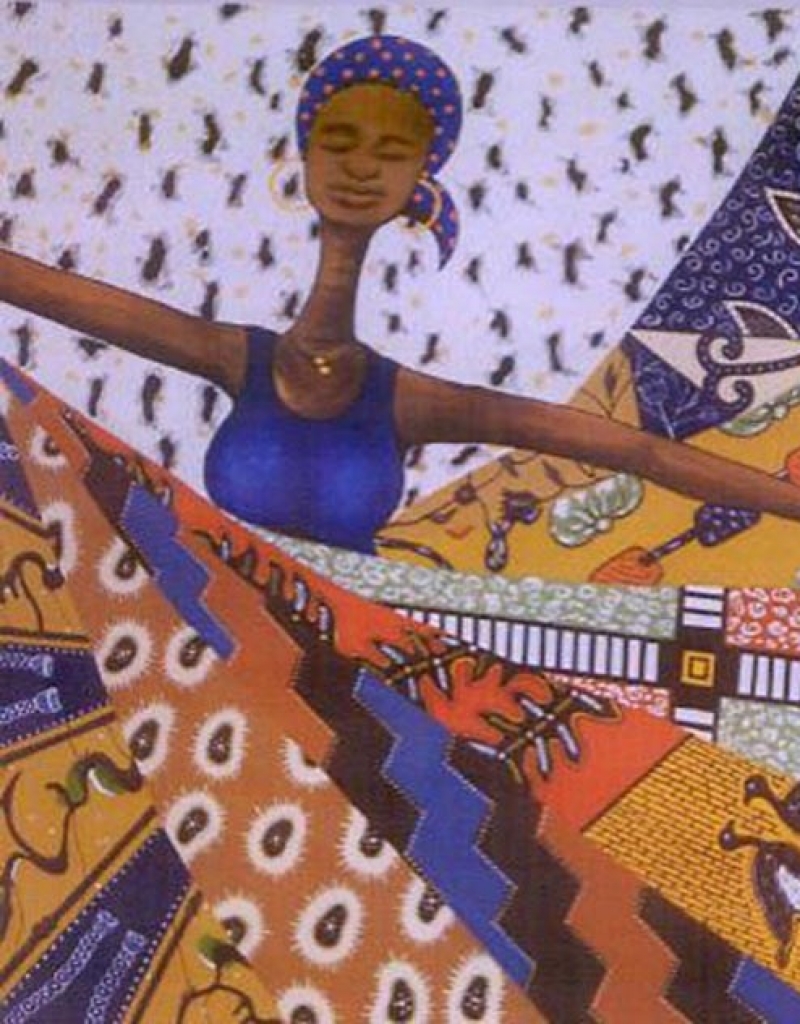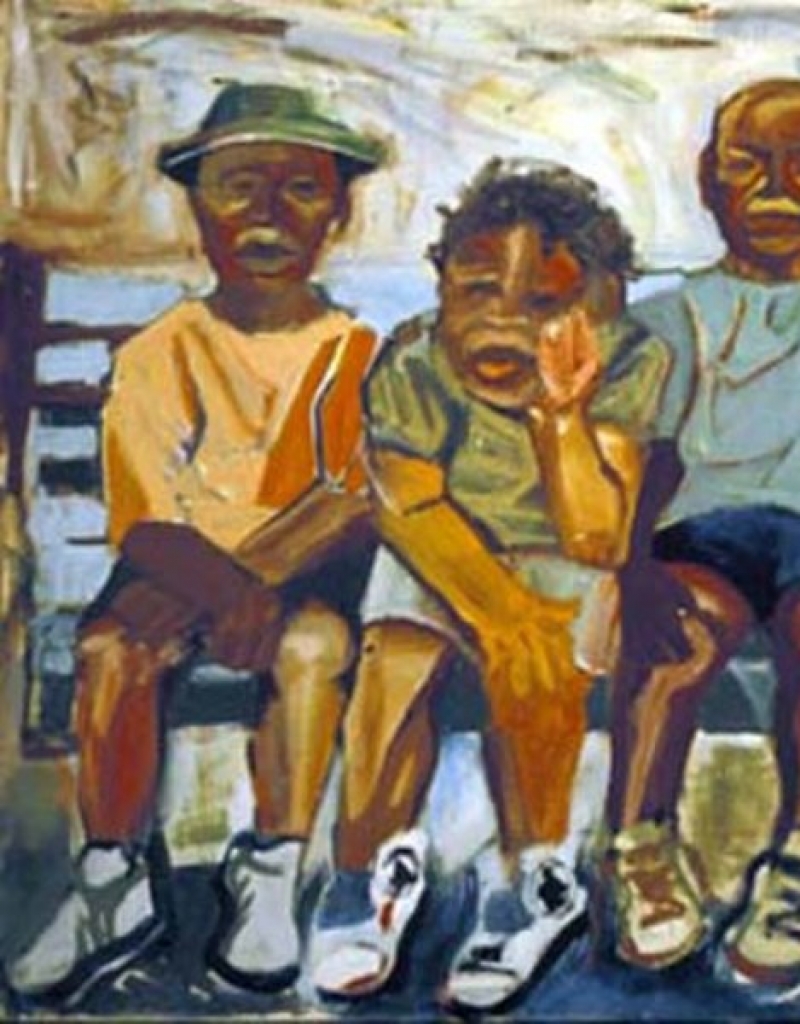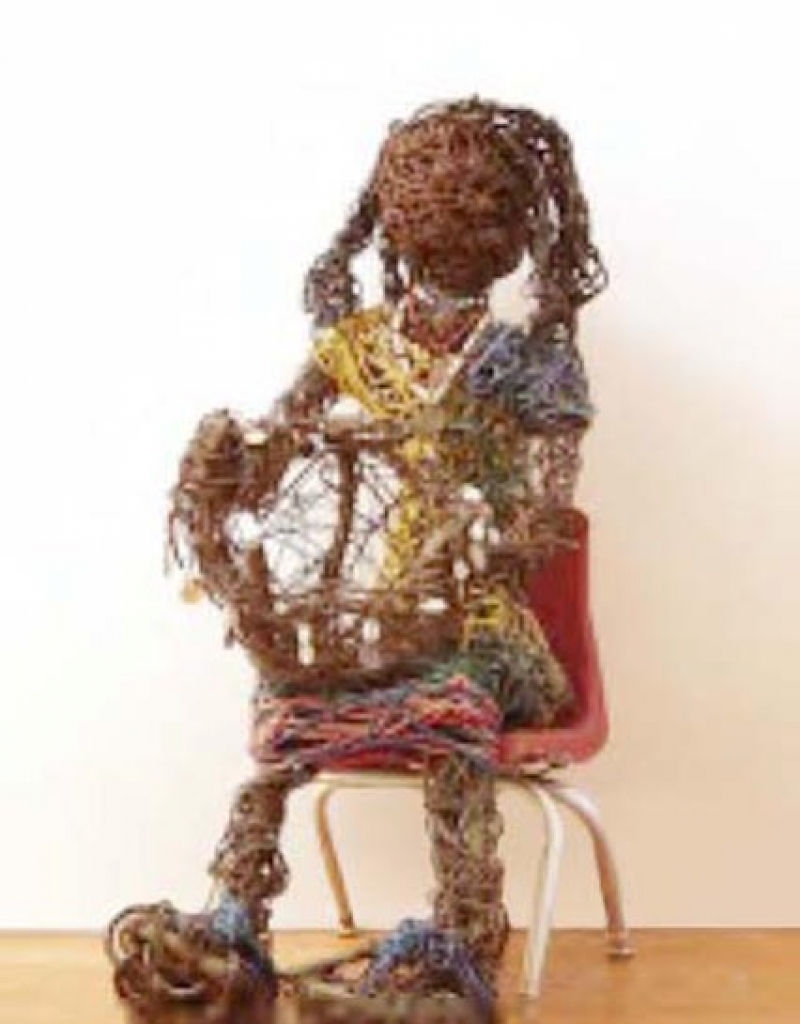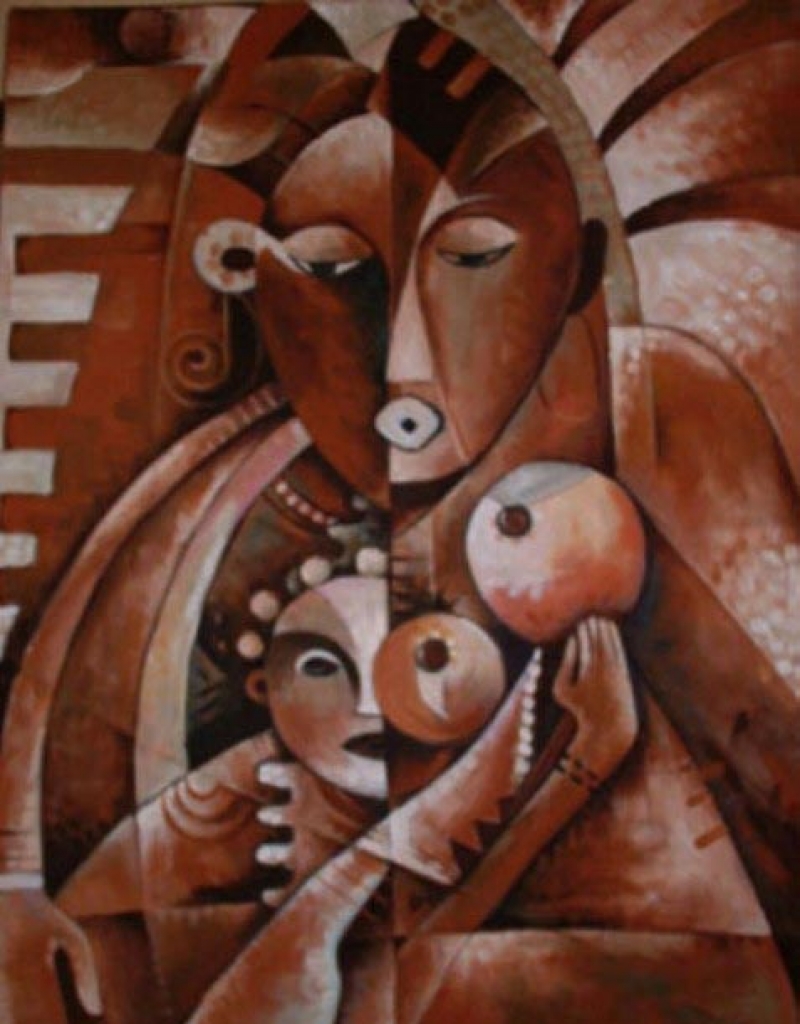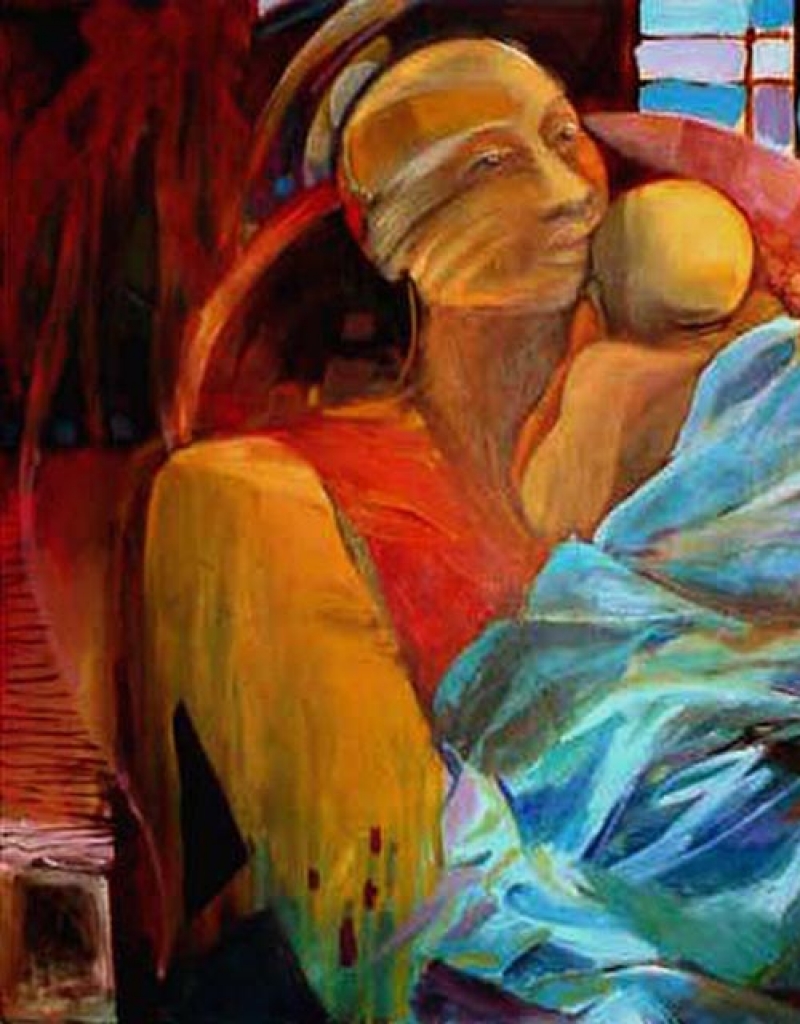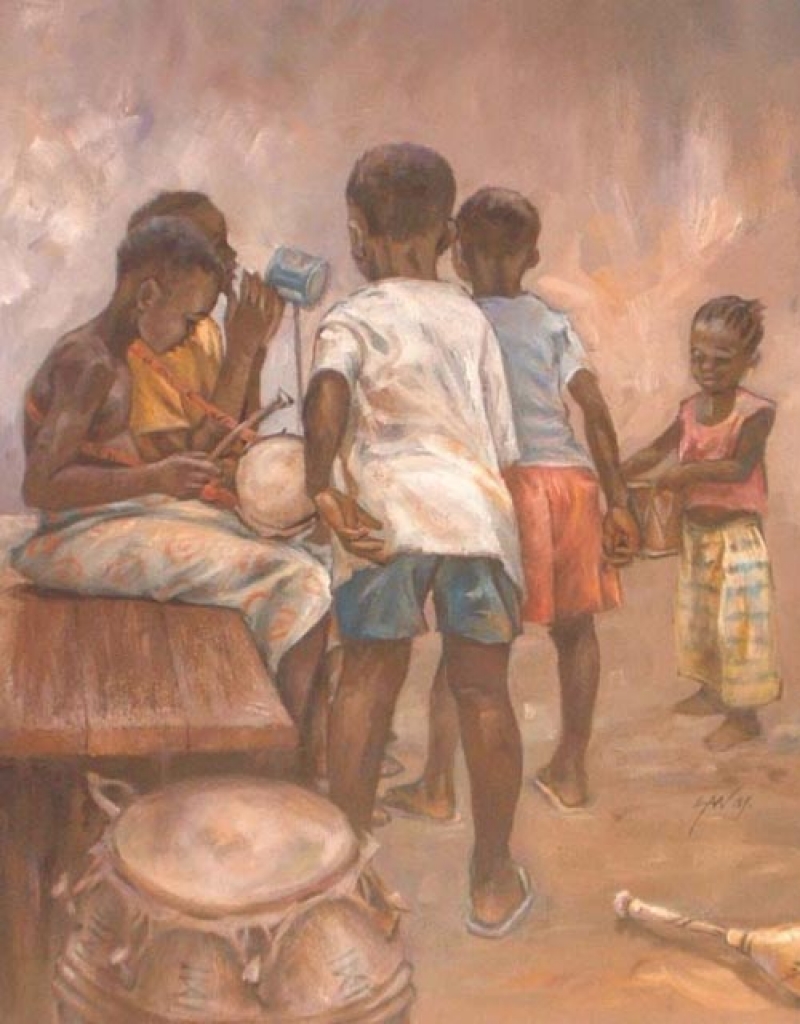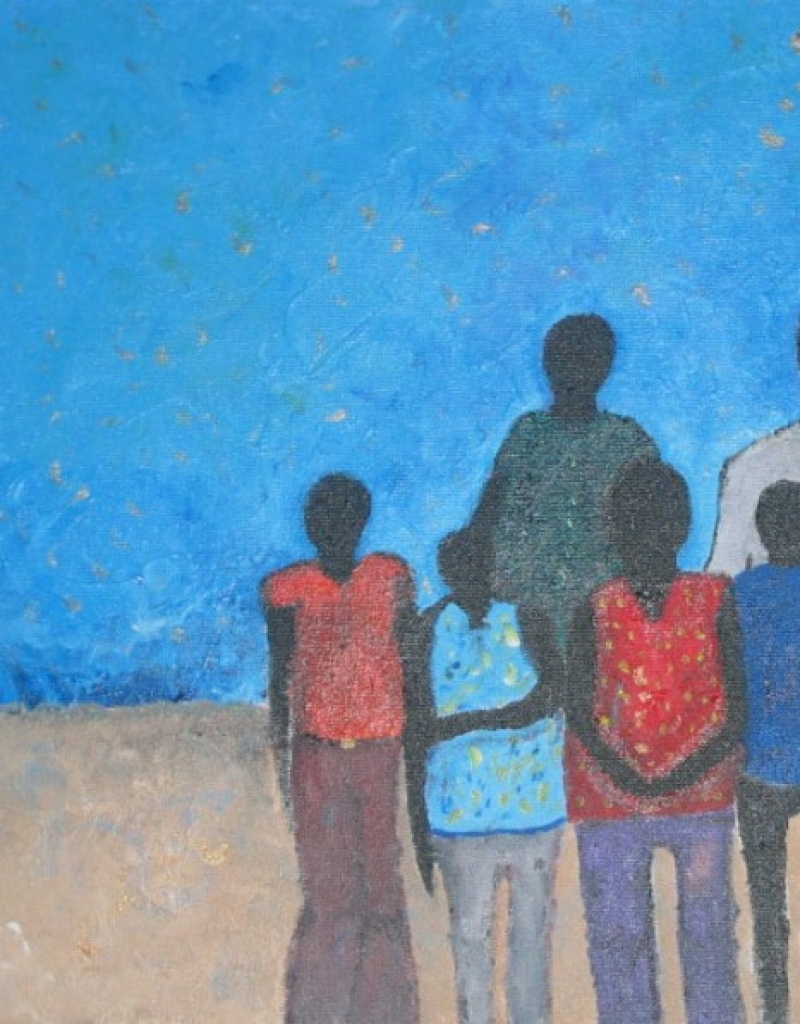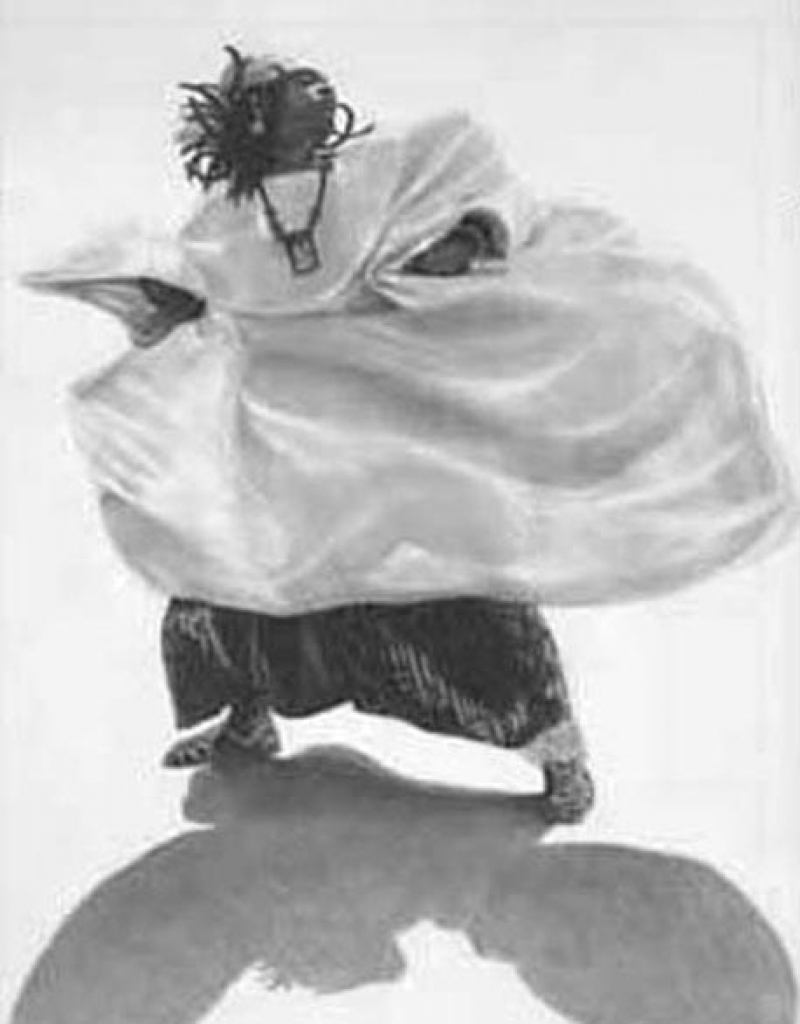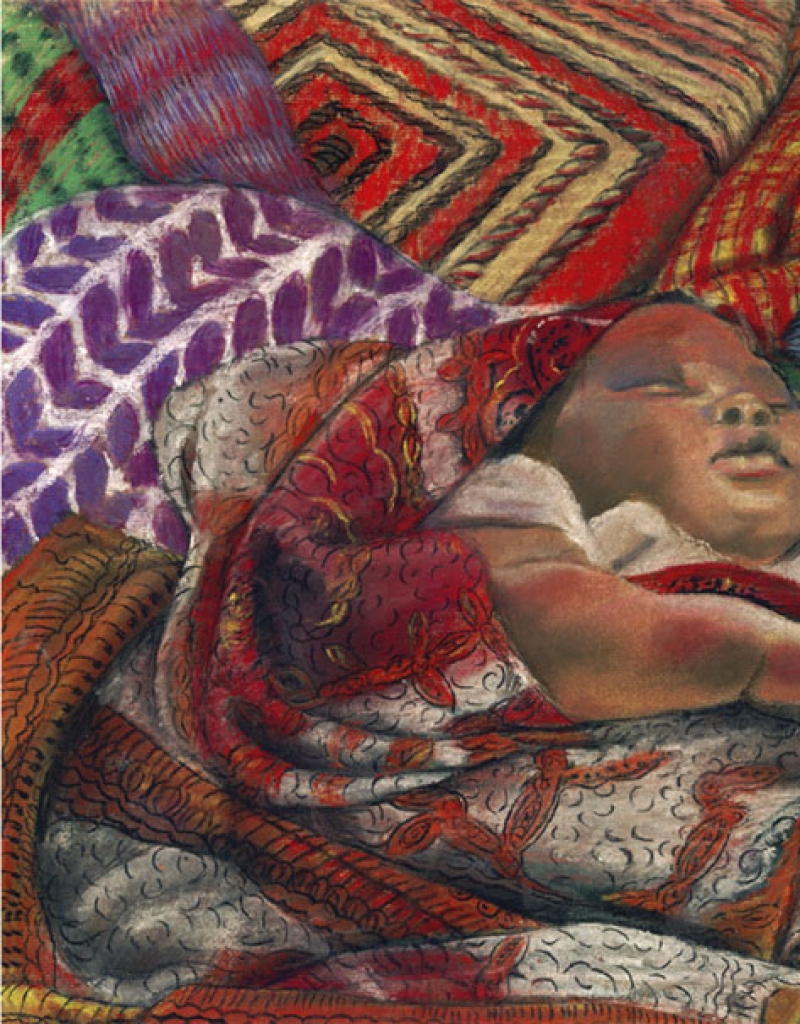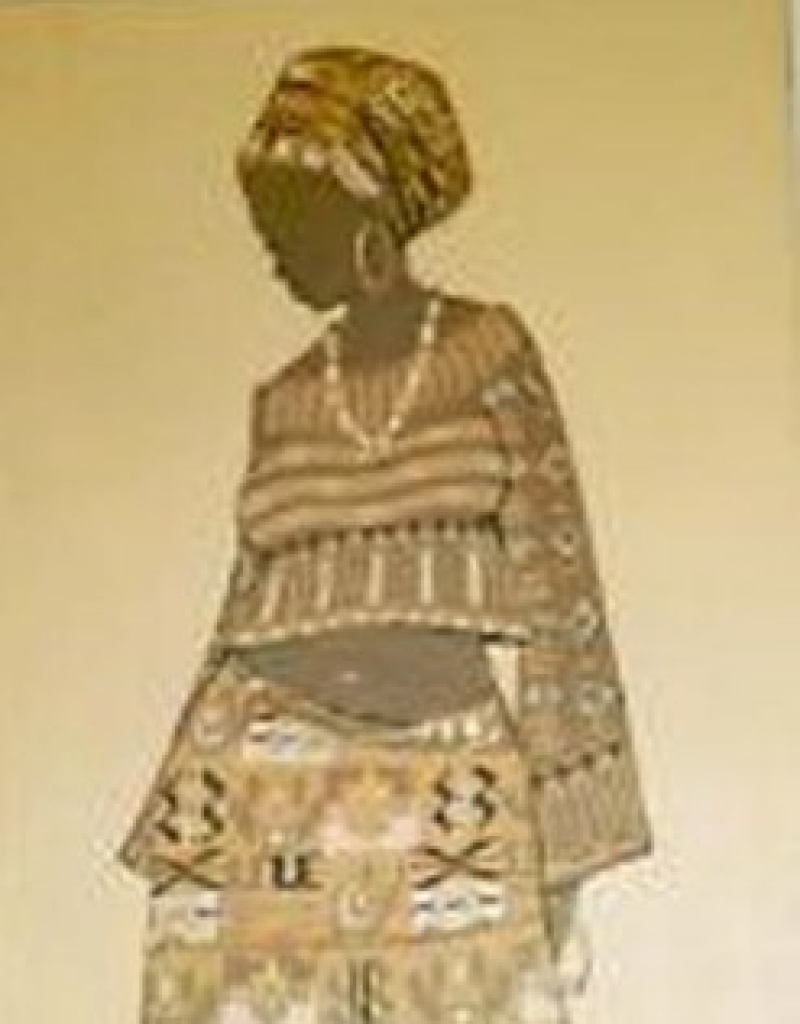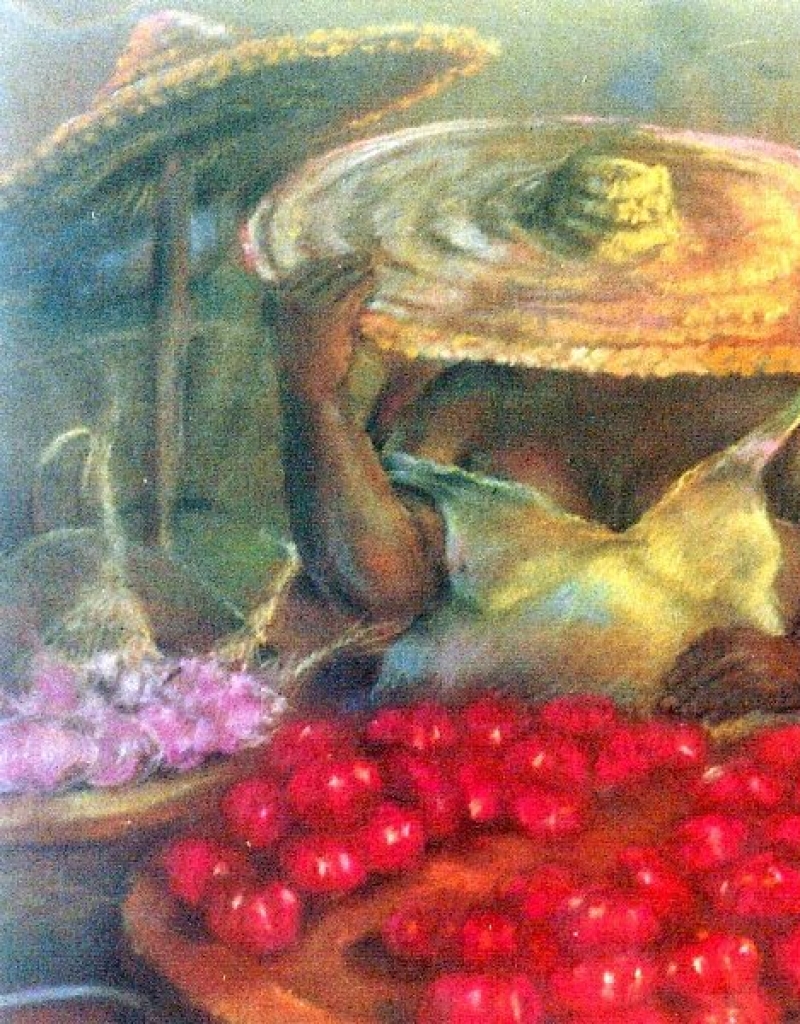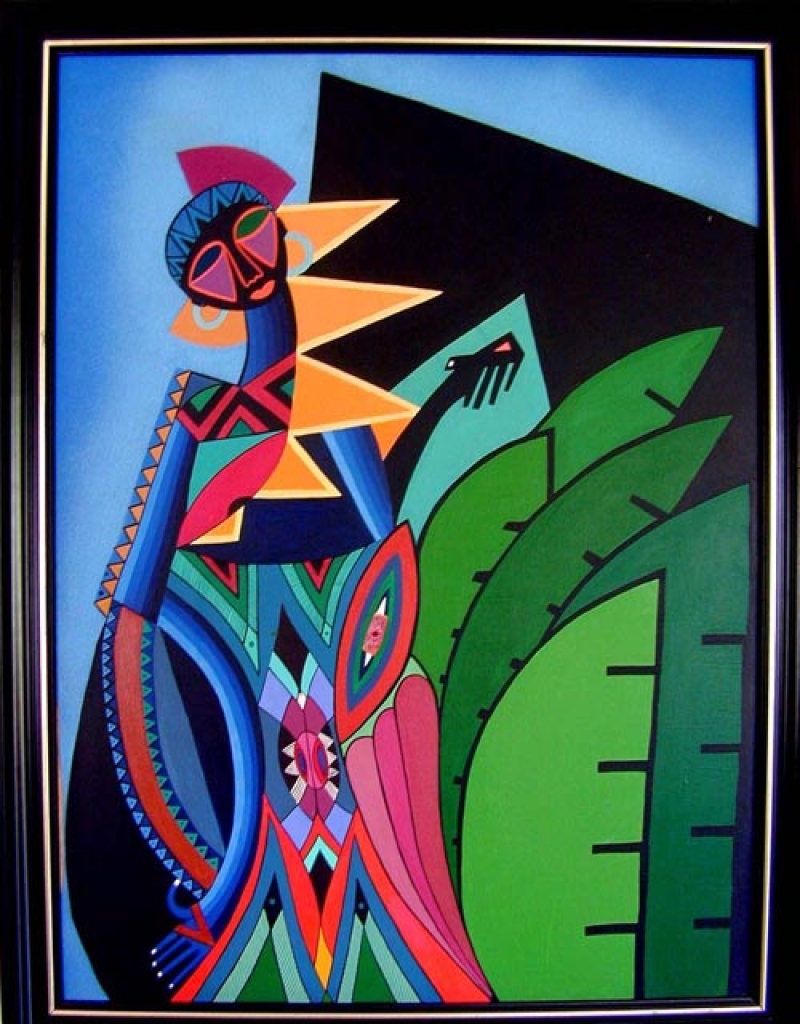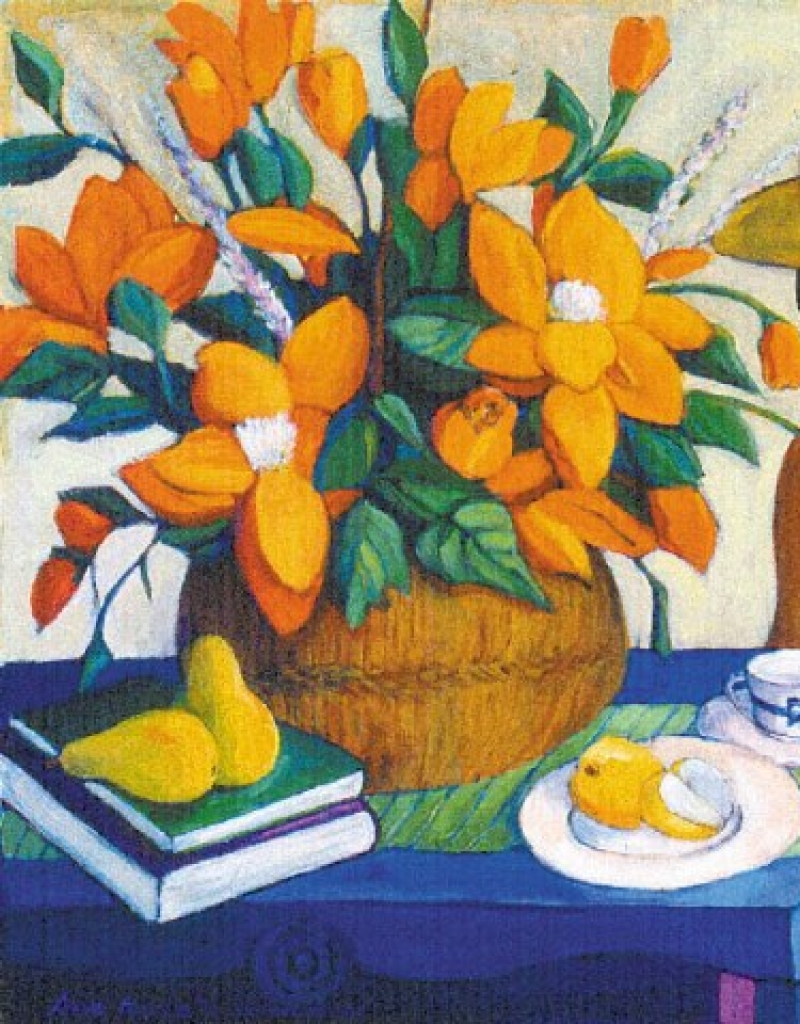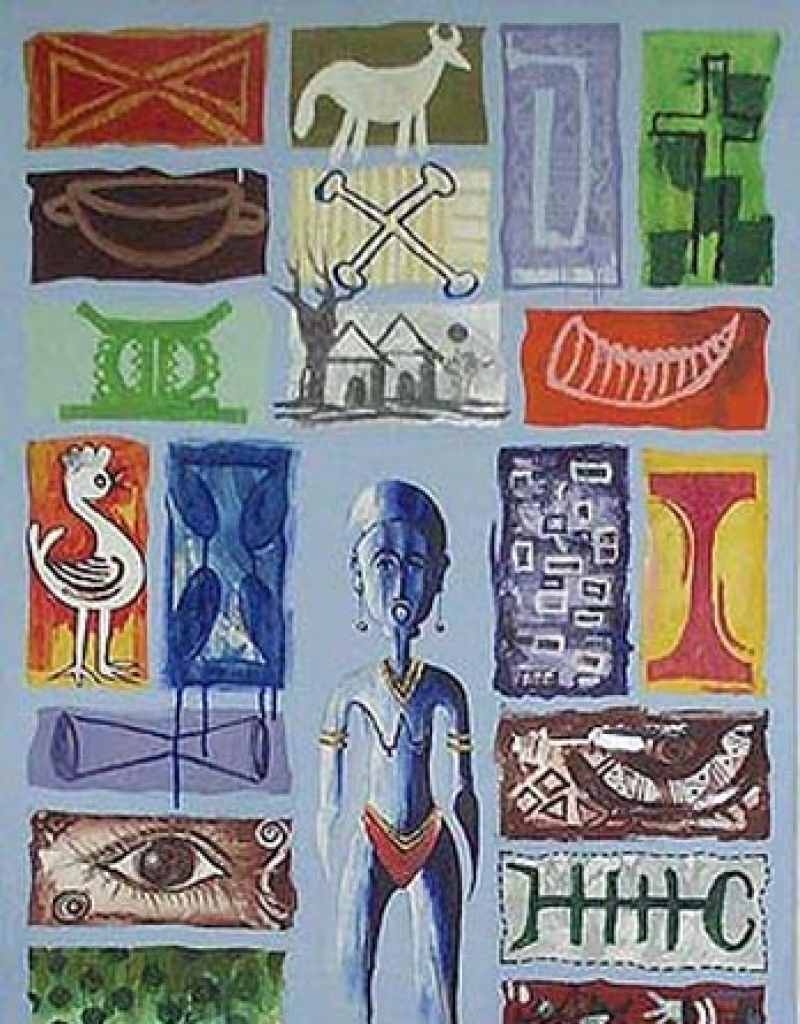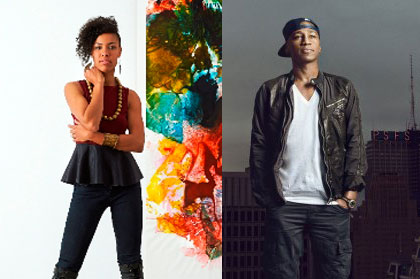 African American • Karo Courtship by Lisa Green
African American • Karo Courtship by Lisa Green
Ancient Traditions – Contemporary Forms
The Embassy of the Republic of Ghana, Washington, DC
October 1 – October 31, 2004
exhibition | artist bios | exhibition catalogue
Artist Bios – American
JENITA LANDRUM-BITTLES received BA in Studio and BFA in Drawing from Arizona State University in Tempe, Arizona. Her MFA from Ohio State University in Columbus, Ohio where she mastered painting and was selected fellow for Residences at Skowhegan School of Painting and Sculpture in New York and in Maine. She is currently the exhibition Director and Art Instructor at Ohio University in Athens, Ohio.
Bittles is the recipient of several fellowships and public commissions, and her works have been shown in over forty exhibitions in Ghana, Dallas, Chicago, Arizona, Indiana, Kentucky, Iowa and Michigan. The Columbus Dispatch, Maine Daily News, Dialogue Magazine, The Call and Post, Toledo Blade and Lima news, among many others have reviewed her artwork.
WESLEY CLARK received a BA in Painting from Syracuse University. At Syracuse, Wesley was introduced to various mediums ranging from painting, metal-smithing, photography and crochet. His prodigious talent and diversified training have blossomed into endless possibilities of artistic expression, which manifests in multifarious moods and environments. Wesley’s budding career has proliferated into creative and poignant artworks, which stir the soul and move the mind.
Clark has exhibited his work at the National Black Fine Arts Show and Pratt Institute in New York, and participated in solo and group exhibitions in Maryland and Washington, D.C.
KEINA ELSWICK DAVIS earned a BA from the University of Florida, in Gainesville. She is a recent recipient of Individual Artist Grants from the Puffin Foundation (2004), the San Francisco Arts Commission (2003) and the George Sugarman Foundation (2003). Keina was nominated for the Visions from the New California Award for the 2004 cycle; given by the James Irvine Foundation in conjunction with The Alliance of Artists Communities and is a semi-finalist in the Sotheby’s 2004 International ArtLink.
She has been featured in several publications including African American Review, San Francisco Chronicle, Dysonna Magazine, Yush Magazine UK , B.E.T’ Sponsored Digital Drum Magazine, African Voices, Luv 4 Art Magazine. Her work is also featured in the book entitled: Regeneration:Telling Stories From our Twenties, which was released in January 2003 by Penguin-Putnam Books, NYC.
Davis’ most recent exhibitions/events include solo shows at the San Francisco African American Museum, Portfolio Gallery in St. Louis, Missouri. Her most recent group exhibits include Of Color at Harvard University (Cambridge), Wild Women 2: Telling Tales at the Fetterly Gallery Vallejo, California. Davis’ work was included in the 5th International Open, curated by internationally recognized artist Faith Ringgold. Her work was promoted at the Musee’ Dapper in Paris, at Bojangles, an exhibit/event sponsored by Cafe de la Soul and MGM Television Group France.
TIM DAVIS received his MFA from the University of Illinois, where he studied with artists Frank Gallo and Bill Carlson. In 1979, he was awarded an Academic Fellowship from the University of Illinois. Tim was then honored by the National Endowment for the Arts with an Arts Management Fellowship in 1984. He has continued to work for the arts in the Washington metropolitan area as a consultant with the D.C. Commission on the Arts and Humanities, D.C. Art Works Murals Project, Council on Foundations, and Arlington County Arts and Planning Commission.
He is the owner and director of International Visions Gallery, LLC, which represents artists from all over the world. He has over ten years of experience in arts researching, arts consulting, and teaching the arts.
As a painter, his focus has been to utilize themes that represent the changing conditions of the human spirit and the interactions of relationships between people. The colors are very intense, creating a mysterious environment within the painting and for the viewer. He describes his work as “a personal understanding of life, and the struggles of being a live on earth in this space and time.” He explores transparent imagery, 3-D textures, and multiple layering of paint in his compositions. Davis has exhibited widely in Chicago and in the Washington, D.C. area; he has many paintings in private and corporate collections.
JOSHUA ISSAC obtained a BA in Fine Arts from the Maryland Institute, College of Art, in Baltimore MD, where he vigorously studied illustration, fine art, and video and audio production.
His is inspired by the world around him. Spending most of his childhood immersed in the urban landscapes of Baltimore and Washington D.C.’s inner cities, he was always either observing or rendering his immediate surroundings. To this day urban city life remains as the primary focus in his artwork. Joshua sees endless possibilities in the stimulation gained from these contemporary environments. The scenes and their components run the range from serious to humorous. Exploring these familiar visages and locations, he whimsically documents his perceptions of their progression, or regression in the midst of social and political confines.
He is currently working in the Graphic Arts department at HUD, and doing freelance illustration work to keep his creative juices flowing. His artwork has been exhibited at the D.C. Art Center, Duke Ellington School of the Arts, and the Maryland Institute College of Art.
GINA LEWIS is currently enrolled at Howard University in Washington, D.C. where she is completing her MFA. She uses her ability to achieve a saturated harmony of strong color, while creating dynamic images that often explore the use of cross-cultural symbolism.
Her current work explores the relationship between her creative process, cultural paradigms and the development of a visual vocabulary through mixed media painting and three- dimensional structures. Personal experience, eclectic spiritual influences, family history and cultural heritage are the basis for a narrative through primarily figurative works of art. Lewis has participated in solo and group exhibitions in Washington, D.C. and Maryland.
JONATHAN PINKETT is a native Philadelphian who studied at Pennsylvania State University in Philadelphia and Antioch College in Yellowspring, Ohio and the Philadelphia College of Art in Pennsylvania.
Through his work, Jonathan expresses the many personalities of “everyday people.” The primary direction of his work is portraiture, and he chooses contemporary and traditional images from Afro-American history and everyday life to express a positive vision of the subjects he selects.
Pinkett’s artworks have been exhibited in galleries in New York, Philadelphia, Maryland and Washington, D.C. and at the Philadephia Museum of Art. His works can be found in the corporate collections of Blue Cross, CBS KYW, Marriott Corporation, National Academy of Sciences, Smith Kline Beechman and in the private collections of President Nelson Mandela, President and Mrs. Bill Clinton, Johnny Cochran, Esq. and Pam Schriver.
MICHAEL PLATT earned a BA from the Columbus College of Art and Design in Columbus, Ohio and a MFA from Howard University in Washington, D.C. He has conducted post graduate studies at George Washington University and Howard University in Washington, D.C., and Hartford University in Connecticut and at the Rutger’s Center for Innovative Printmakers Workshop in New Brunswick, New Jersey.
His most recent body of work concentrates on digital images and artist books which center on ideas of imagined ritual and transformation of the human spirit. In addition, he has collaborated with poet Carol Anne Beane to create two artist books, forgotten contours (2001) and solitary mornings (2004). These images and poems are fragments, along with newspaper articles, old family photographs and TV news, that come together to form a particular image of what kind of people we are serving as glimpses of our human condition.
Platt is the recipient of the 15th Mayor’s Arts Award for Excellence in Artistic Discipline: Visual Art in Washington, D.C. and the Artist-In-Residency programs at Pyramid Atlantic, Bob Blackburn’s The Printmaking Workshop, Rutger’s Center for Creative Printmakers Fellowship Grant Program and the Brandywine Workshop.
His artworks have been exhibited in museums and galleries in Washington, D.C., Maryland, Virginia, France, Greece, Rome and Slovenia.
SANDRA POPE received her arts education at Bay State College in Boston, Massachusetts and at Montgomery College, Rockville, Maryland. The last born of eleven children, she comes from an artistic family – her grandfather was a basket weaver and her mother is a seamstress.
Primarily a ceramist and painter in a variety of mediums, such as oil, acrylic, watercolor, charcoal and her latest invention pastel on beeswax, she is also a sculptor and printmaker. Her works have been exhibited in various galleries such as, Strathmore Hall, Touchstone Gallery, Gallery on the Circle, Women’s Club of Chevy Chase, Montgomery College Art Gallery and Performing Arts Center, Silver Spring Cultural Art Festival, and the Show Place Arena. There are permanent collections of her paintings can be found at Montgomery College Campus Towers and a six-panel mural displayed at the Smithsonian Air & Space Museum in Washington, DC.
Pope is the owner of Colour Art Gallery and Studio in downtown Silver Spring. The Gallery and Studio is dedicated to beautiful and functional art, made available to the public in a variety of work, not only created by Sandra, but it also provides exhibit space to other artists in the metropolitan area. She provides workshops in ceramics and painting to children and adults.
FLOYD ROBERTS is a graduate of the Corcoran School of Art in Washington, D.C. where he earned a BA in Fine Arts. He is a sculptor, who incorporates wood, stone, clay, metal and found objects to create pieces that tell stories about the people, places and things he believes are important. His sculptural objects are often inspired by his Trinidadian culture.
His most recent exhibition took place at the Smithsonian Anacostia Museum and Center for African American History and Culture. His solo exhibition featured, Art Historian created to acknowledge educational contributions of an important, and often overlooked, contemporary mentor. The art historian, represented by a painted clay figure, offers lessons on the accomplishments of black artists. (Courtesy of Smithsonian Anacostia Museum and Center for African American History and Culture)
Roberts’ sculptures have been featured in Parish Gallery in Washington, D.C., Strathmore Hall Art Center, Rockville, Maryland and Isobel Neal Gallery in Chicago, Illinois and group exhibitions in galleries in Maryland and Virginia.
CYNTHIA SANDS entered Howard University as a piano major, and was awarded a BFA from the University in 1971. For over thirty-five years, she has developed a singular artistic vision that includes recognition of the curative potential that is inherent in traditional artistic expressions, as well as a commitment to public service. The results have been diverse and innovative – ranging from distinctive visual arts – to bold textile designs – to functional art and creation of objects of adornment.
Her sense of color and concept has been informed by her formal training by, and close friendships and collaborations with many of the greatest African and African American artists of the 20th and 21st centuries – including Lois Maylou Jones, Skunder, Jeff Donaldson, John Otterbridge, James Phillip, to include a few.
Sands’ latest creative project titled “Mysterious Travelers” is a series of visual, dream-like images captured on canvas. This series of paintings capture the appearances of time travelers – ancient and ancestral griots who stand as totems from the past and seers for the future. According to Ms. Sands, these “Mysterious Travelers” are the connective tissue through time and space, which reminds us of the soul and universal spirit of humankind. She says, “Their ancient memories are carried by the wind, waves, beams of light and dew drops across the borders of human understanding and enlightenment” which you can also see through the paintbrushes and mind’s eye of Cynthia Sands.
LARRY SAXTON obtained his MFA from Howard University in Washington, D.C. He went on to study painting and sculpture at the Corcoran School of Art in Washington, D.C. where he was awarded a Ford Foundation Scholarship.
He draws his inspiration from African art. Saxon states, “The art of Africa is refreshing; it offers an understanding of who I am. The spiritual aspects, the mathematical qualities of design, and the rhythmic patterns, translated the beliefs and purposes of the African people. Their use of lines, shapes and colors would supply the confidence and courage I needed to produce an art that reflects my beliefs, and my interpretation of my life and environment.”
While in Washington, D.C., Saxton was provided the opportunity to meet and befriend some of the countries most famous artists including the painter Charles Sebree who had a great impact on Saxon’s art. Sebree said of Saxon’s work, “he demonstrates his ability and versatility as an artist in his use of many and varied media as the vehicles of his creations.” Saxon has exhibited throughout the Washington, D.C. area, and his artwork can be found in many corporate and private collections.
RICHARD WARD earned his BFA and Art Education Certificate at the School of the Art Institute of Chicago, in Illinois and a MFA at Howard University in Washington, D.C. He currently provides art instruction to students in the Newport News City School system. He is affiliated with the Tidewater Artist and College Art Associations and the National Conference of Artist.
He has received several commissions from the D.C. Commission on the Arts and Humanities, and was also commissioned by the Maryview Hospital Foundation, D.C., and D.C. Teachers’ Federal Credit Union. His awards and honors include, but are not limited to: Studio One-0-Seven – the Gallery’s choice, Rawls Museum Arts – Honorable Mention, Bay Days – Award for Distinction for 3D.
Ward’s works are in the permanent collection of the Kansas African American Museum, Inc. in Wichita, and the DuSable Museum of African American History in Chicago, Illinois. His most recent exhibitions include the Newsome House Museum and Cultural Center, Courthouse Galleries, Hampton University Museum, Charles H. Taylor Arts Center and the James E. Lewis Museum of Art at Morgan State University.
ANN WILLIAMS holds a BFA from Howard University and is currently an art director and has taught graphic design at American University as an adjunct professor.
Her main themes are family, spirituality, and African American culture. She draws much of her subject matter from family members, everyday experiences, and her childhood memories. In describing her work, Williams states, “I learned early on, that being Black was something unique and special. The music, spirituality, heritage, and traditions of our culture set us apart from others. I am very proud of my heritage and have many precious memories. Through my art, I want to share these memories and life experiences with others.”
Williams has participated in group exhibition at the American Association for the Advancement of Science 2003 Spring Show, Tri-Nubian Art Expo, and The Fairfax County Arts Council and the League of Reston.
MICHAEL SCOTT JOHNSON earned a Liberal Arts degree from Western Michigan University in Kalamazoo, Michigan. Choosing to gain a wide range of knowledge, Scott embarked on a liberal arts degree, which exposed him to the study of African-American Anthropology under noted African-American anthropologist, Dr. Warren Perry of New York City’s African Burial Ground Project. He is also a former Operation Crossroads Africa participant, serving as a member of its first group to enter post-apartheid South Africa.
Scott’s education as a sculptor began in Bulawayo, Zimbabwe. While there he studied traditional African techniques of stone sculpting under the tutelage of local artists who occupied the endless alleyways of the city. Johnson’s greatest opportunity came when he was invited to apprentice (1996-1999) with the internationally renowned master sculptor, Nicholas Mukomberanwa (1940-2002).
Johnson’s work has been exhibited in galleries and universities across the United States including Harvard University and the National Gallery of Zimbabwe. His sculptures are located in both private and public collections, most notably the Schomberg Center for Research in Black Culture and the Hampton University Museum. His seminal piece, “The Judgment of Peter Norton” has been added to the permanent exhibit “Two hundred Years of Art from the Hampton University Museum”.
Artist Bios – Ghana
EMMANUEL KWAME ADJEI was born on February 14, 1975. He hails from Akwapim, a suburb of Accra which has produced six prominent artists referred to as the Akuapim. He attended the Ankle College of Art in Kanda and earned a High National Diploma. It was through this experience that he realized that art is larger than the world itself, and this belief compelled him to further his studies under one of the master teachers in the school (Ankle College of Art). And under his tutelage, he gained a new respect for the profession.
Adjei has participated in exhibitions at the National Museum, National Theater and the Cresta Royal Hotel in Ghana.
DR. OKU AMPOFO (1908 – 1998) was not only a physician, a pioneer in the use of herbal medicine and founder of the Centre for Scientific Research into Plant Medicine, but also an actor and well-known sculptor.
Begun as a hobby during his medical student days in Edinburgh, Scotland, his sculpture flourished in Ghana and he soon achieved international fame. His works, executed in multi-colored hard woods or cement and terrazzo, display not only unusual artistic beauty but true understanding of the medium used. They also portray cultural and socio-religious aspects of the Ghanaian way of life.
Dr. Ampofo has exhibited in Senegal, Nigeria, England, United States of America, Israel, Brazil and Romania. He influenced many contemporary Ghanaian artists – painters, sculptors and ceramists alike.
AMPOFO-ANTI received his Bachelor of Arts degree from the University of Science and Technology, Kumasi, Ghana and his Master of Fine Arts degree from Howard University, Washington, D.C. He also completed further studies at the Institute of African Studies, University of Ghana, Accra, Ghana.
He is a multimedia artist, specializing in ceramics, printmaking and painting. He is presently Professor of Art at Hampton University, Hampton, Virginia. He has served as an art consultant for several organizations, and has conducted numerous workshops with art institutions, such as the National Museum of African Art, Smithsonian Institution and the Virginia Beach Center for the Arts.
Ampofo-Anti has received several commissions, including public art commission with the city of Rocky Mount, North Carolina and the city of Richmond, Virginia. His artworks have been exhibited in Africa, Europe, and the United States. He is the recipient of numerous awards, including the Peninsula Fine Arts Award for Excellence in Clay.
SAMUEL ASHONG was born on June 1, 1957. He attended the Accra Academy and later studied at the College of Art, Kwame Nkrumah University of Science and Technology (K.N.U.S.T.) from 1981 to 1984, where he specialized in textile and sculpture and graduated with a Diploma in Rural Art and Industry.
He is currently working with the Centre for National Culture in Accra, Ghana where is serves as the Administrative Officer and the Secretary of Ghana Association of Visual Artists, in the Greater Accra Region. Ashong has exhibited his artworks in Ghana, Germany, Moscow and the United States.
JACOB KWESI BENNETT was born on September 28, 1969. He attended the Kwame Nkrumah University of Science and Technology where he earned a Bachelor of Art degree in 1996. While in school he participated in two group exhibitions: The European Community Exhibition in collaboration with the College of Art K.N.U.S.T. under the theme “The European Community as seen through the eyes of Ghana” in May 1993 and The “Otumfuo Opoku Ware II Regalia Painting Exhibition” in 1995, marking his 25th Anniversary after being enstooled as the chief of the Ashanti Kingdom in Ghana.
Bennett, upon graduation, participated in the Visual Art Exhibition – PANAFEST in 1997 and 1999 (Pan African Festival of Arts and Culture) in Ghana. Its theme and title, “The Re-emergence of African Civilization.” He began exhibiting his artworks outside of Ghana in 2003, when he participated in an exhibition in Rome at the Heads of Ghana Diplomatic missions in Europe at the ambassador’s residence, and went on to exhibit in Modra Galerija and David’s Maasai Gallery in Solvenia.
ERIC EDDY was born on April 27, 1977. He enrolled in the Ghanatta College of Art and Design, where he earned a Diploma in Fine Art in 1997. Wanting to explore different aspects of art lead him to the Applied Art Workshop, were he studied sculptural design and techniques under George Annan a Ghanaian artist who received his training in France.
His paintings and sculptures are inspired by women who he believes are the light that brightens the lives of every man and child. He portrays their inner most beauty through rural African sceneries set in the market place, in the home and at the beach. His artworks capture the essence of the African in relation to their origin, displaying a mix of traditional symbols and beliefs, which are domestic, true and pure.
Eddy has received several commissions and has exhibited in galleries in Ghana, Ivory Coast, United States and England.
BERNARD MENSAH was born on December 24, 1978. He attended the College Of Art and Industry, where he acquired an in-depth knowledge of artistic design which has aided him in becoming a prominent and prolific painter.
He has been painting from infancy. He states, “When I was a child, I created images through my own imagination. My creativity is a form of my religious expression. I create to portray the beauty of nature and I express this through my artistic talents.”
Bernard is able to translate illusion into reality through his paintings. He uses acrylic on canvas when creating his works. He believes the acrylic enhances his style of painting. It allows him to be innovative in his approach to his work and bring different sensibilities to the canvas.
ENOCH YAW MENSAH studied graphics at the Teragogen School of Art. Then moved on to the Ghanatta College of Art and Design where he studied fine art. Whilst in art school, Yaw had the privilege of studying under several experienced artists.
He has grown to become a key figure in the neo-figurative and realist art developing amongst young artists throughout the country. Yaw’s work portrays cultural, social and environmental aspect and views of his motherland Ghana.
Yaw is an enthusiastic colorist and uses oils, acrylic, watercolor, charcoal and pastels to produce beautiful portraits and landscape senses for private collectors and galleries. His works have been featured in exhibitions in Ghana and the United States.
THOMAS APPIAH NTIAW was born in 1979 in the Nyankumasi Ahenkro, Central Region of Ghana. He earned his diploma in painting and graphic design at Ghanatta College of Art and Design in Accra, Ghana. Appiah, works express his innermost thoughts and feelings. His works focus on the day-to-day activities of the Ghanaian people. Appiah believes that the empty walls of a room are identical with empty dreams and non-fulfillment in life.
Appiah participated in the Ghana Association of Visual Artists (GAVA-GAR) and Shell Ghana Ltd. art competitions, which were held in Accra, at the National Theatre.
GEORGE OBENG was born on March 30, 1952. He attended the Accra School of Arts after basic education, and the University of Science and Technology in Kumasi, Ghana.
From 1971-1986, he was the assistant cultural officer for the Arts Council of Ghana, and was responsible for their national exhibitions, the restoration of damaged works, and training workshops for sculptors.
Obeng is a well-known wood sculptor, and is recognized by the Museum of African Art, Smithsonian Institution as one of the top artist of Ghana. His has participant in group exhibitions in Ghana, Oakland, California, United Kingdom, Bulgaria, Romania, China and many African countries.
KWAKU OFORI-ANSA, PH.D. is a native of Ghana. He received his professional and academic training both in Ghana and in the United States. He earned his Master and Doctoral degrees from Howard University and Columbia University respectively. Currently, he is an Associate Professor at Howard University where he has been teaching and conducting research in the theory, practice and history of African traditional and contemporary arts since 1980.
For 21 years, he has served as the curator for the African Art Museum of Maryland; and has worked as a consultant for such cultural institutions as the Smithsonian Institution National Museum of African Art, the National Museum of Natural History, and the African Voices Project. He is a member of the African Studies Association, National Conference of Artists and National Art Educators Association. Additionally, he serves as a member of the Board of Advisors of the Panafest Foundation, an international Pan-African cultural festival based in Ghana.
Ofori-Ansa is credited with a number of group art exhibitions in Ghana and in the United States since 1973. In addition to his creative abilities he has authored numerous articles, and publications on African arts and culture including such popular educational charts as Kente is More than a Cloth, Meanings of Symbols in Adinkra Cloth, Weights of Wisdom: History, Production and Uses of Akan Gold Weights, Royal and Sacred Stools of the Akan People of Ghana, and Royal Linguists Staffs of the Akan People of Ghana; all published by Sankofa Edu-cultural Publications.
EMMANUEL TETTEH PECKU was born on December 20, 1981. He entered the Ghanatta College of Art and Design in Accra, Ghana in 1999 to receive his artistic training. But his interest in art began during pre-school, where he often drew on any available surface, to the dismay of his teachers who often complained. However, after begin guided to art materials, he began to receive awards in school for his artistic abilities which encouraged him to pursue formal training.
He enjoys creating works using acrylics which he applies to canvas using a flat short-bristle brush and a palette knife. The result is a unique style, greatly enhanced by an almost fanatical regard for the purity of colors.
Pecku has exhibited in Accra and won two major art competitions for his artworks, which address social issues in Ghana.
KWABENA AFRIYIE POKU was born in Ghana. He attended Kwame Nkrumah University of Science and Technology in Kumasi, where he majored in painting and earned both a Bachelor and Master of Fine Art degree.
Kwabena’s works show technical mastery of various painting media, skilled in the use of oils, acrylics, watercolor, pastels, charcoal, pen and ink, as well as using the computer to draw and paint. His paintings express images of his environment, the beliefs of the people, their culture, traditions and politics.
GODWIN ADJIE SOWAH was born in 1978 in Adaraka a suburb located in Accra, Ghana. He received his artistic training from the Ghana Association of Visual Artists. A member of the Ga people, it is his rich culture and heritage that inspires his artwork.
He began painting in middle school and over the years has remained dedicated to his craft. He is an artist of eminence talent whose works depict imagery of Ghanaian traditions and mythology.
Sowah’s faith plays a critical role in his creative process, for he believes his artistic abilities are a gift from God. And that one must respect nature and the community in which they live.



 Sharon Burton is a Washington, DC based artist, art advisor and independent curator. She is the founder and Creative Director of SJB Creative Ventures, LLC which consists of two entities: Gemini Visions Art Studio (launched in 2007) which focuses on her own artistic endeavors as a mixed media/collage/assemblage artist and The Artinista Art Advisory (launched in 2012) with the mission to increase number of professional women art collectors to close the gender gap in fine art collecting through a variety of art consultancy services.
Sharon Burton is a Washington, DC based artist, art advisor and independent curator. She is the founder and Creative Director of SJB Creative Ventures, LLC which consists of two entities: Gemini Visions Art Studio (launched in 2007) which focuses on her own artistic endeavors as a mixed media/collage/assemblage artist and The Artinista Art Advisory (launched in 2012) with the mission to increase number of professional women art collectors to close the gender gap in fine art collecting through a variety of art consultancy services. After graduating from Cambridge University, Robert Devereux worked with Amnesty International and Macmillan Publishers before joining Virgin in 1980 as Richard Branson’s partner. He established the entertainment division of the company of which he was Chairman, which included the creation of Virgin Vision, in its day Europe’s leading film and video producer and distributor, the launching of Virgin Radio, Virgin Net, Virgin Interactive Entertainment and masterminding the purchase of Virgin Cinemas.
After graduating from Cambridge University, Robert Devereux worked with Amnesty International and Macmillan Publishers before joining Virgin in 1980 as Richard Branson’s partner. He established the entertainment division of the company of which he was Chairman, which included the creation of Virgin Vision, in its day Europe’s leading film and video producer and distributor, the launching of Virgin Radio, Virgin Net, Virgin Interactive Entertainment and masterminding the purchase of Virgin Cinemas.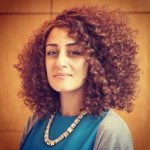 Deana Haggag has been the Director of The Contemporary since the spring of 2013. Prior to her work with The Contemporary, she was the Curator-in-Residence at Gallery CA, which is also located in Baltimore, MD in the City Arts building — home to over 90 artists. Deana received her MFA in Curatorial Practice from the Maryland Institute College of Art and a BA from Rutgers University in Art History and Philosophy. In addition to her work at The Contemporary, Deana curates independent exhibitions, consults on various public art initiatives, and contributes to cultural publications. She is on the board of Whoop Dee Doo, Station North Tool Library, and is the Dean of the Baltimore Chapter of the Awesome Foundation. Deana was named “10 People to Watch Under 30” by the Baltimore Sun in 2013.
Deana Haggag has been the Director of The Contemporary since the spring of 2013. Prior to her work with The Contemporary, she was the Curator-in-Residence at Gallery CA, which is also located in Baltimore, MD in the City Arts building — home to over 90 artists. Deana received her MFA in Curatorial Practice from the Maryland Institute College of Art and a BA from Rutgers University in Art History and Philosophy. In addition to her work at The Contemporary, Deana curates independent exhibitions, consults on various public art initiatives, and contributes to cultural publications. She is on the board of Whoop Dee Doo, Station North Tool Library, and is the Dean of the Baltimore Chapter of the Awesome Foundation. Deana was named “10 People to Watch Under 30” by the Baltimore Sun in 2013.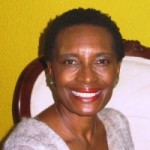 Makgati Molebatsi has extensive experience in marketing and integrated communications (advertising, promotions and public relations). She has over 30 years experience gained from various industries; FMCG, retail and energy and advertising.
Makgati Molebatsi has extensive experience in marketing and integrated communications (advertising, promotions and public relations). She has over 30 years experience gained from various industries; FMCG, retail and energy and advertising. 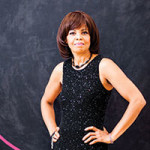 Myrtis Bedolla is founding director of Galerie Myrtis, a contemporary fine art gallery located in Baltimore, Maryland. She was featured in the October 2013 issue of the Baltimore Style Magazine article “Women in the Arts” which honored women at the helm of the Baltimore art scene.
Myrtis Bedolla is founding director of Galerie Myrtis, a contemporary fine art gallery located in Baltimore, Maryland. She was featured in the October 2013 issue of the Baltimore Style Magazine article “Women in the Arts” which honored women at the helm of the Baltimore art scene.


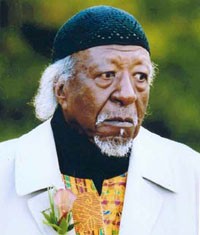
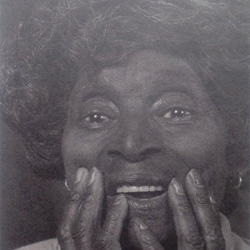
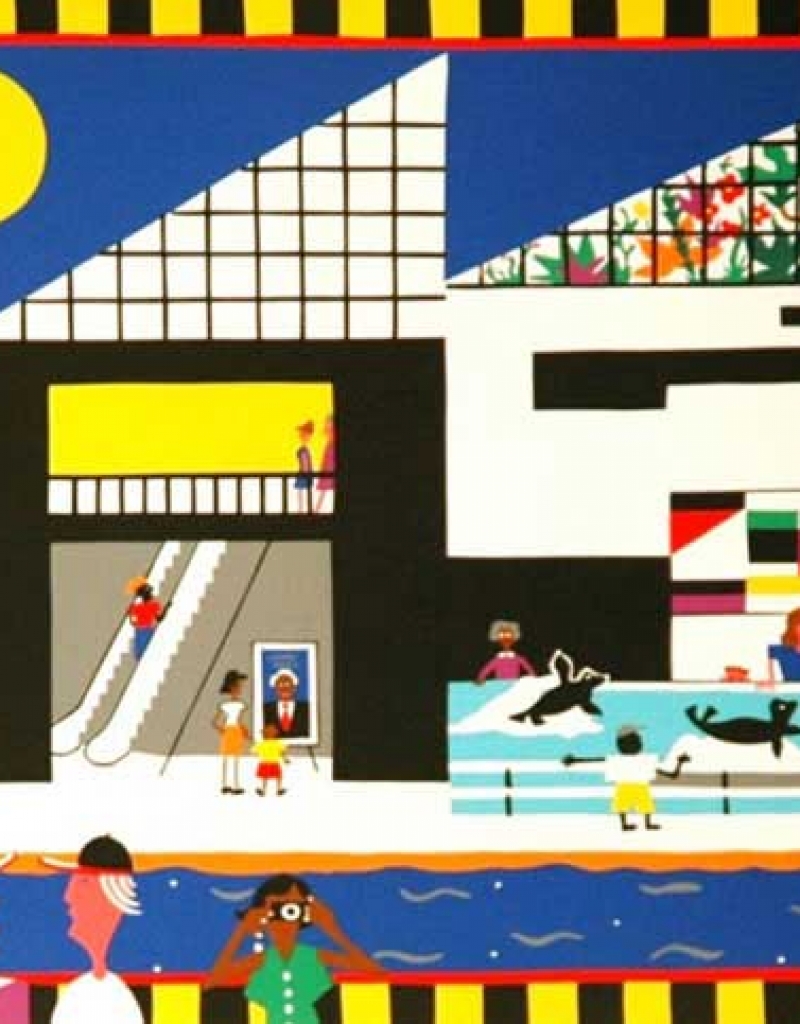
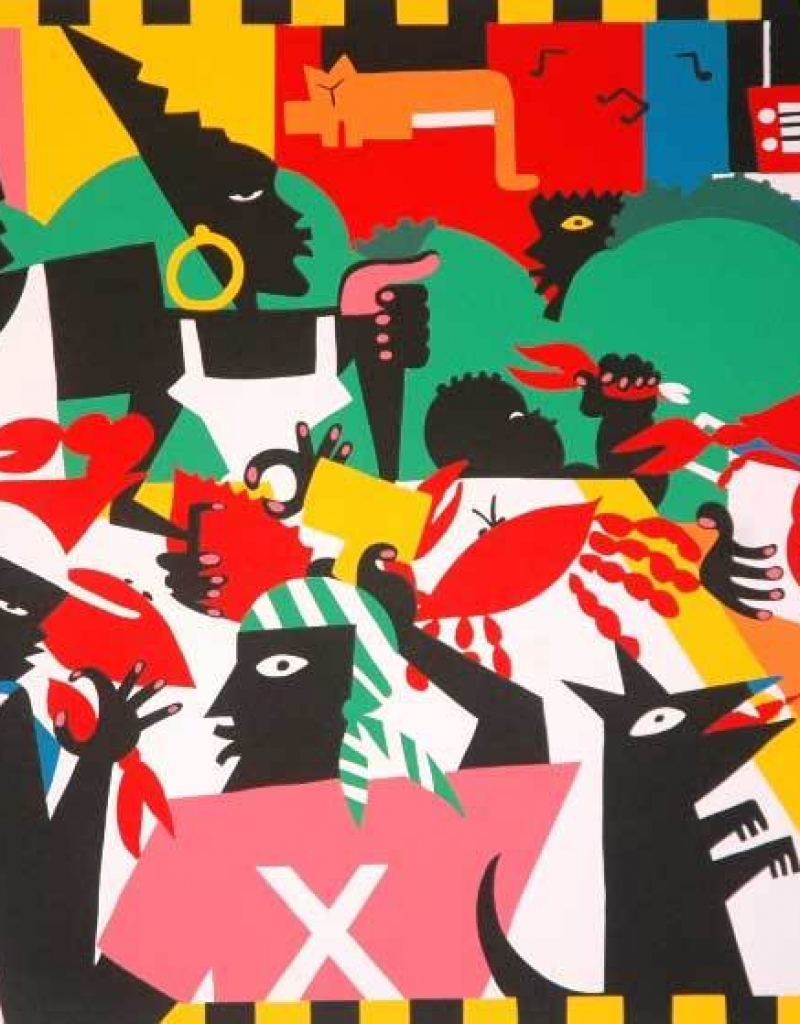
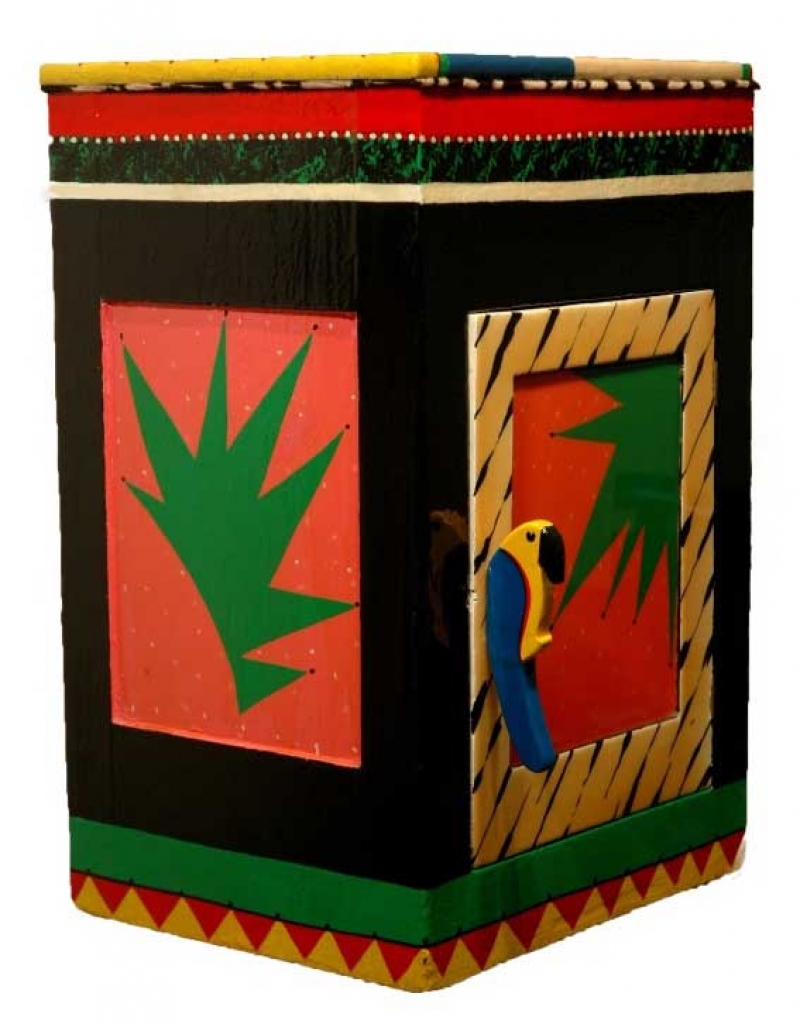
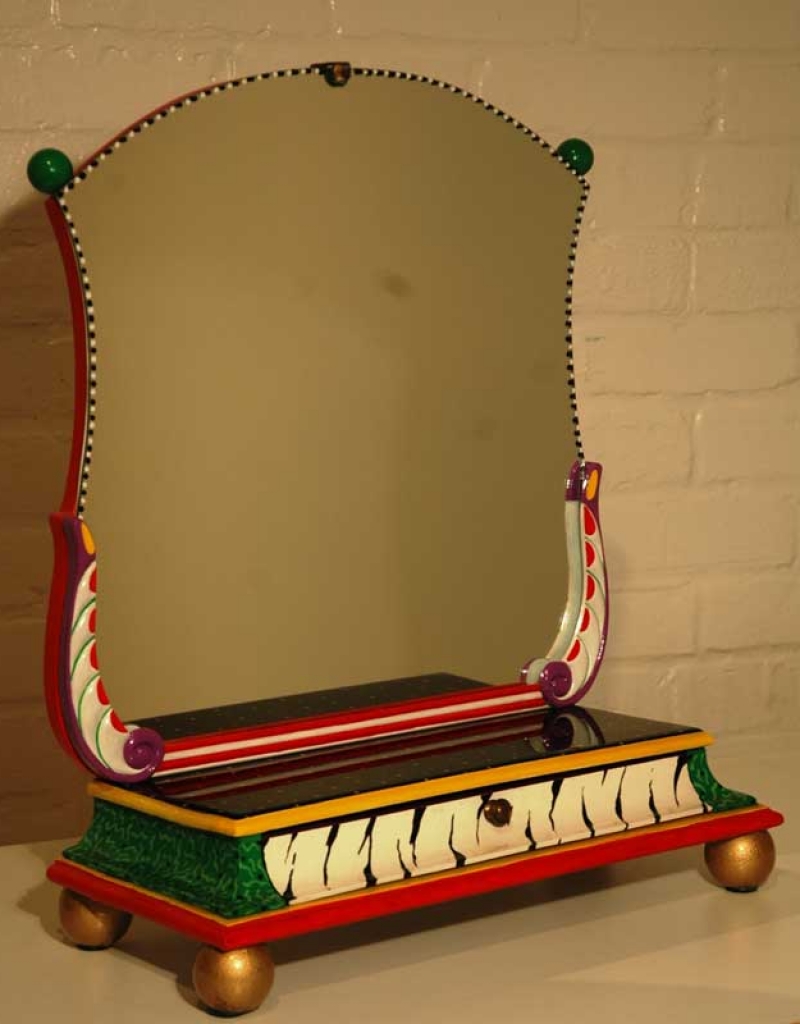
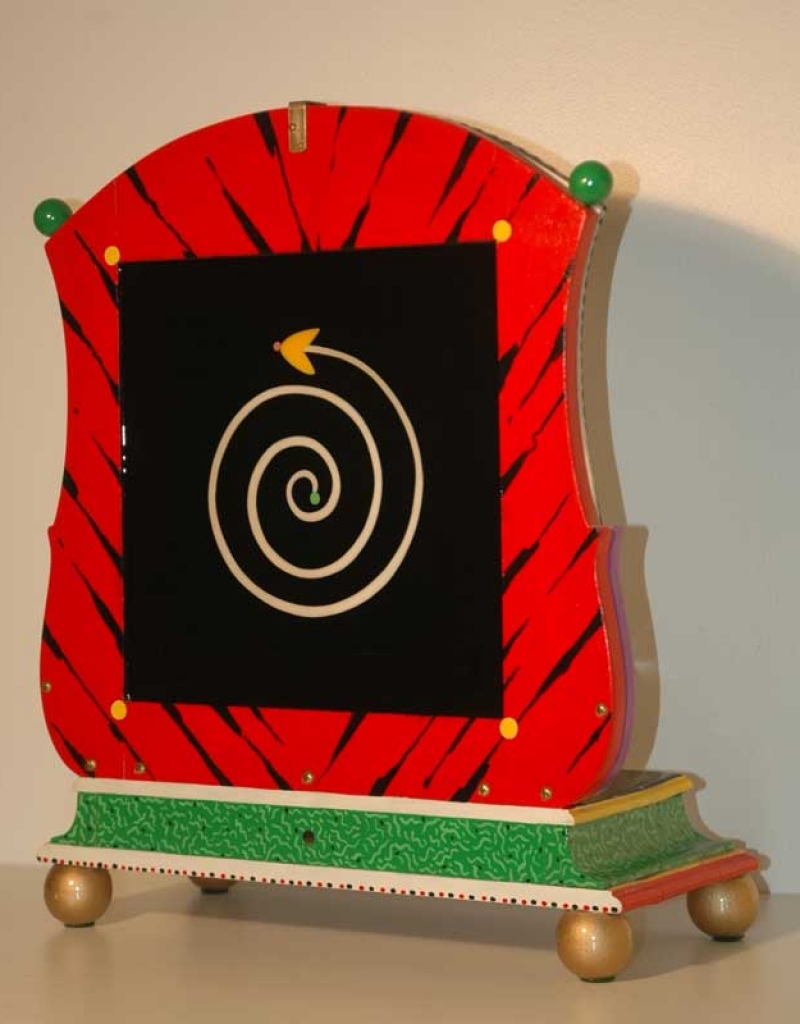
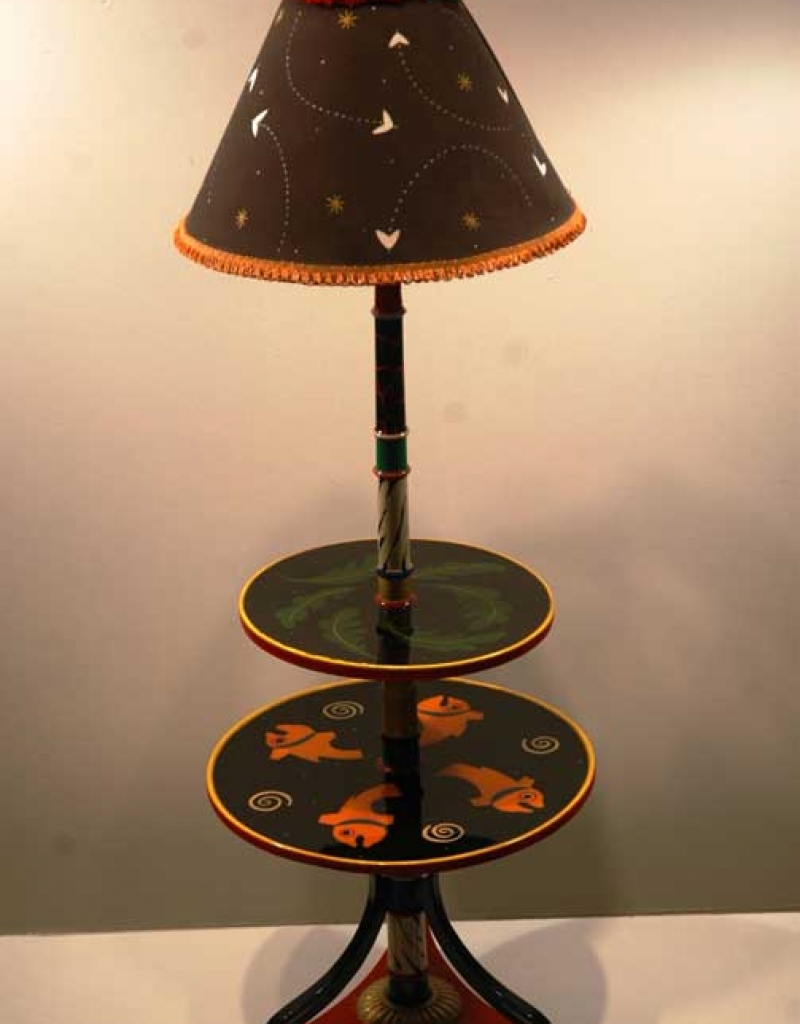
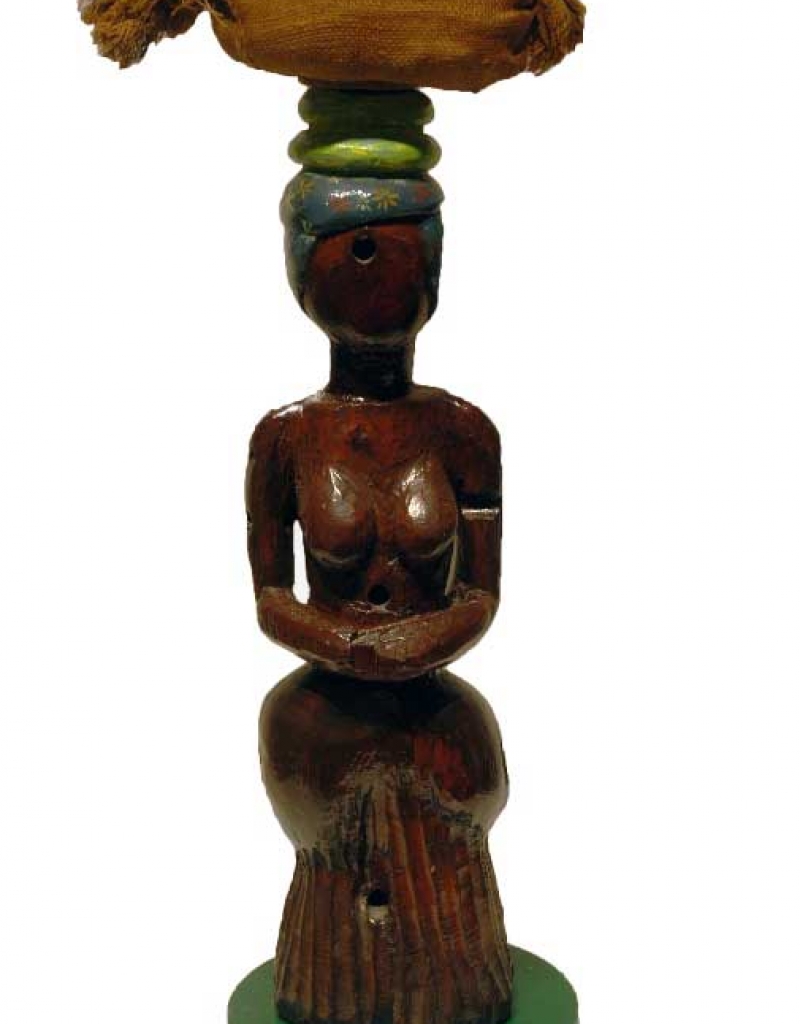
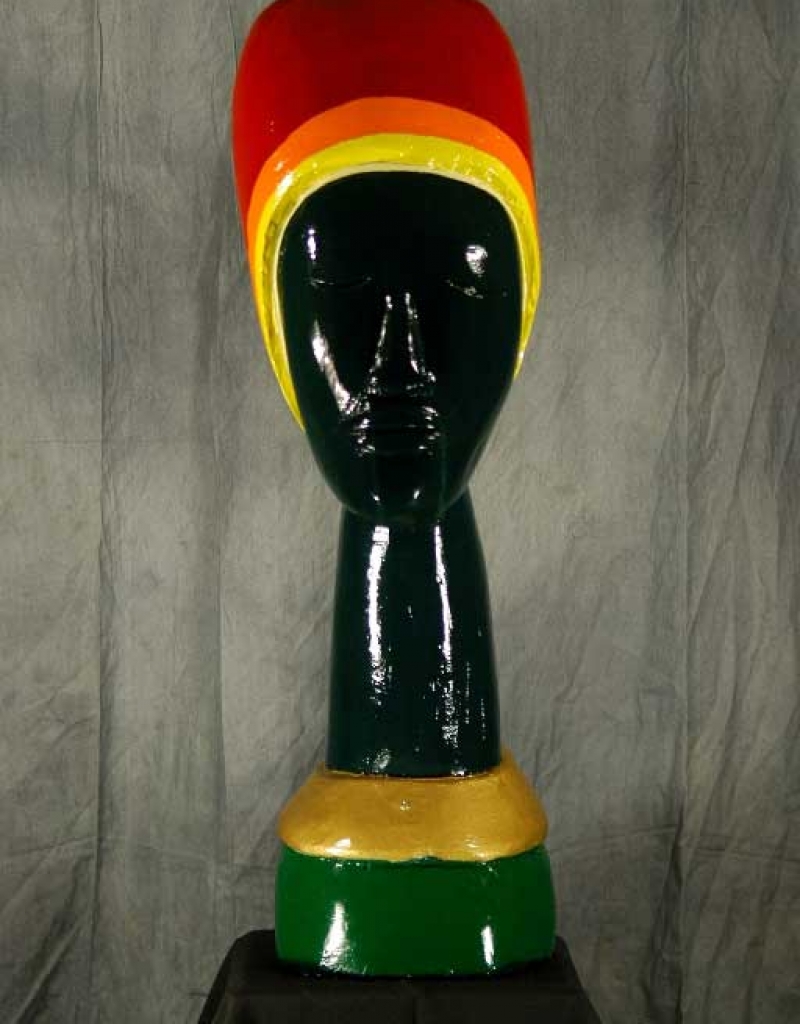
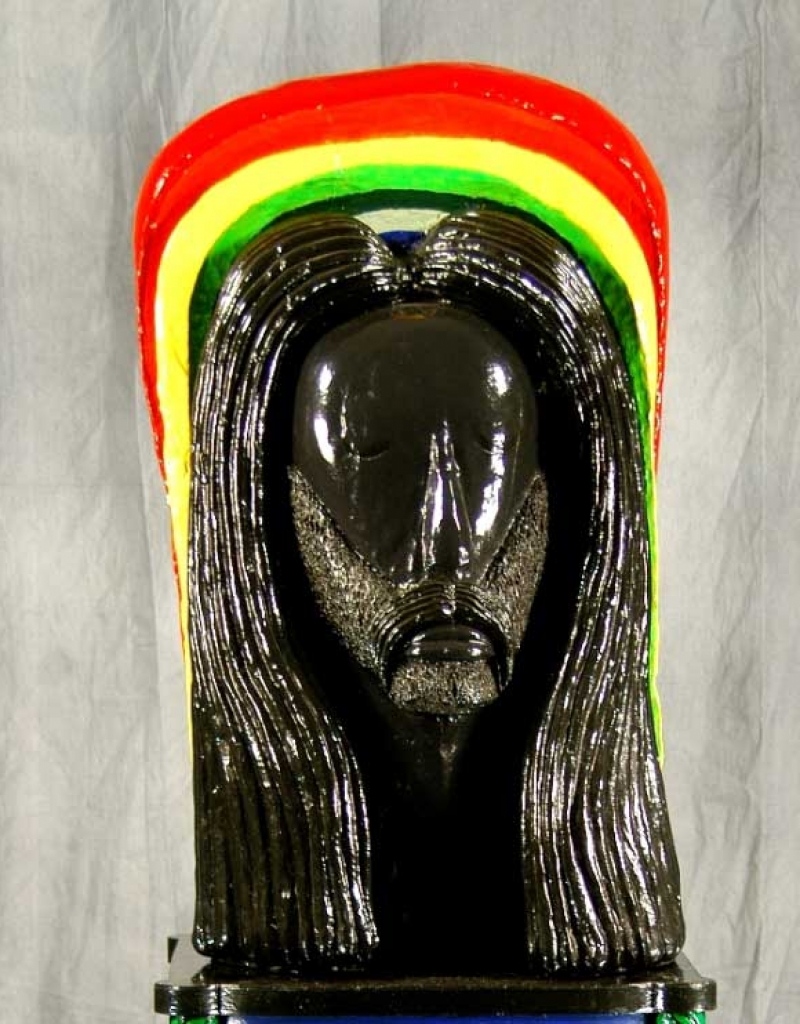
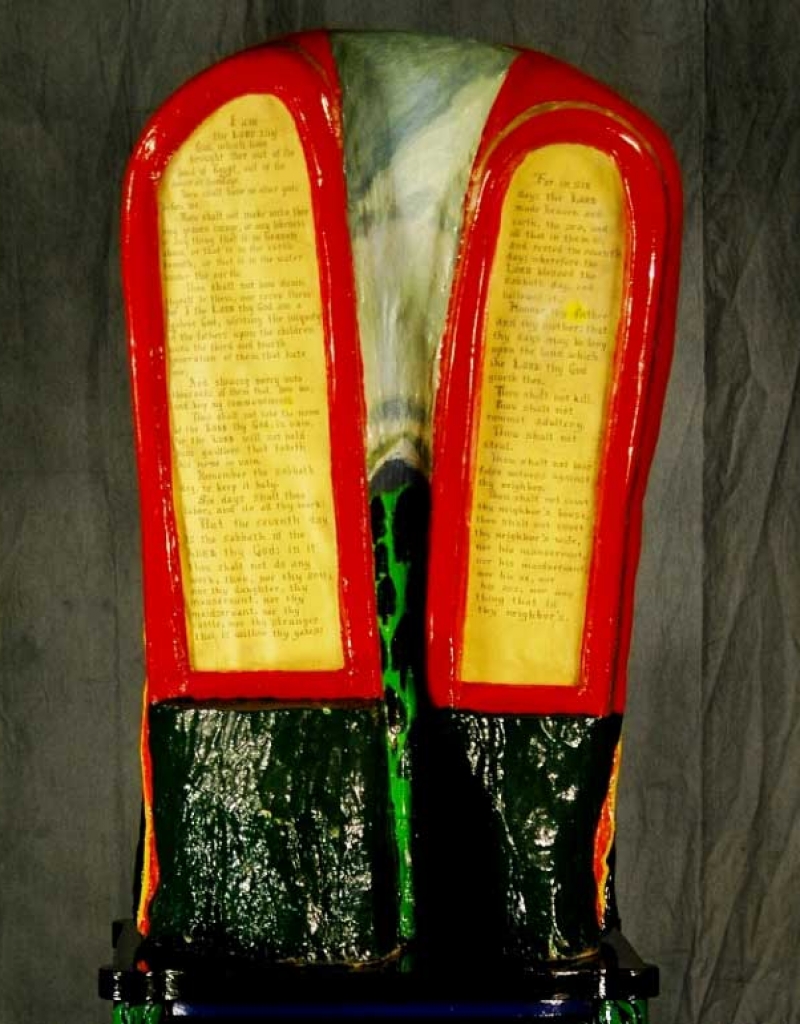
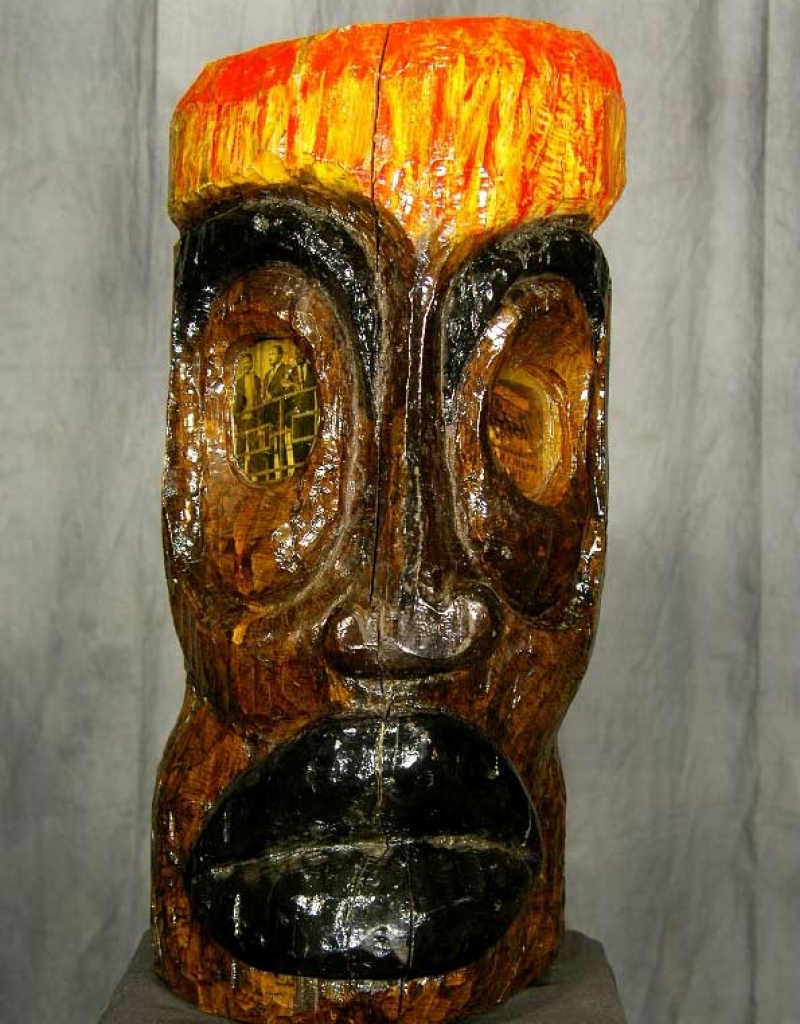

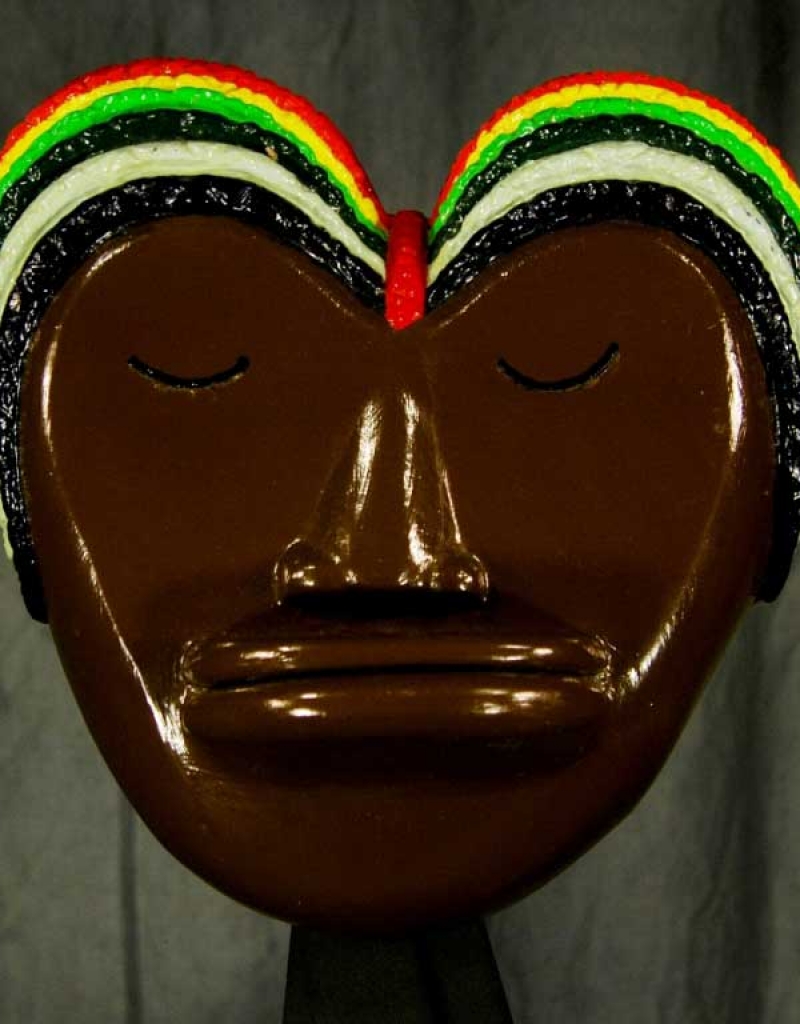
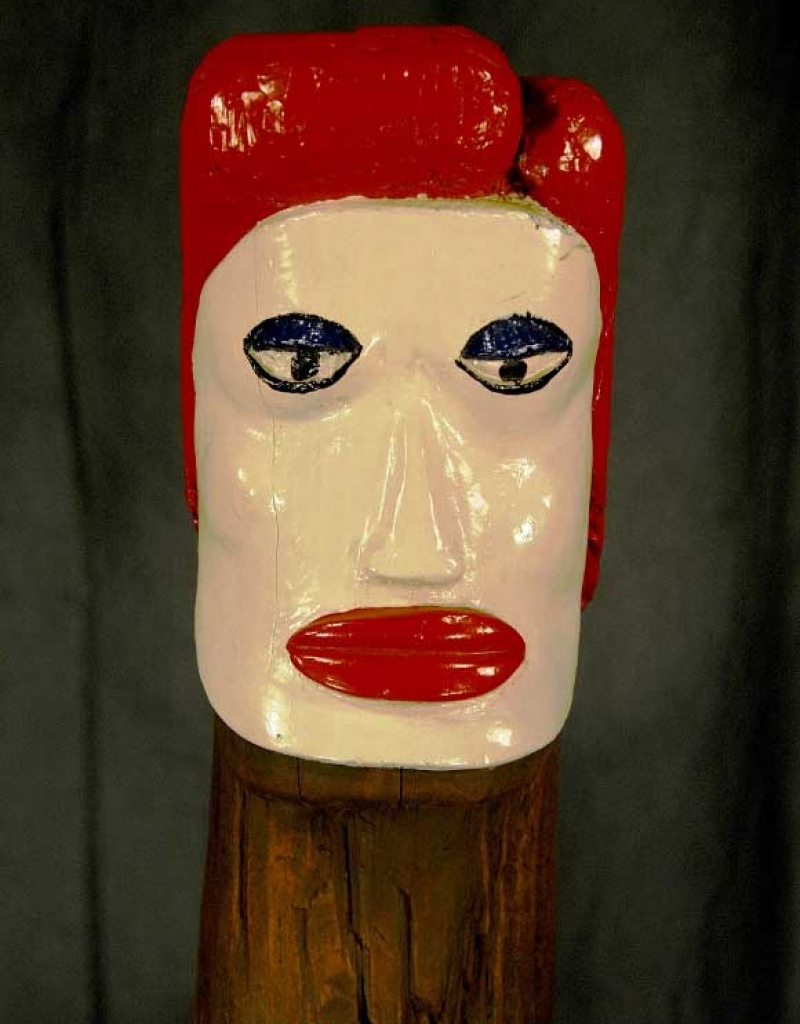

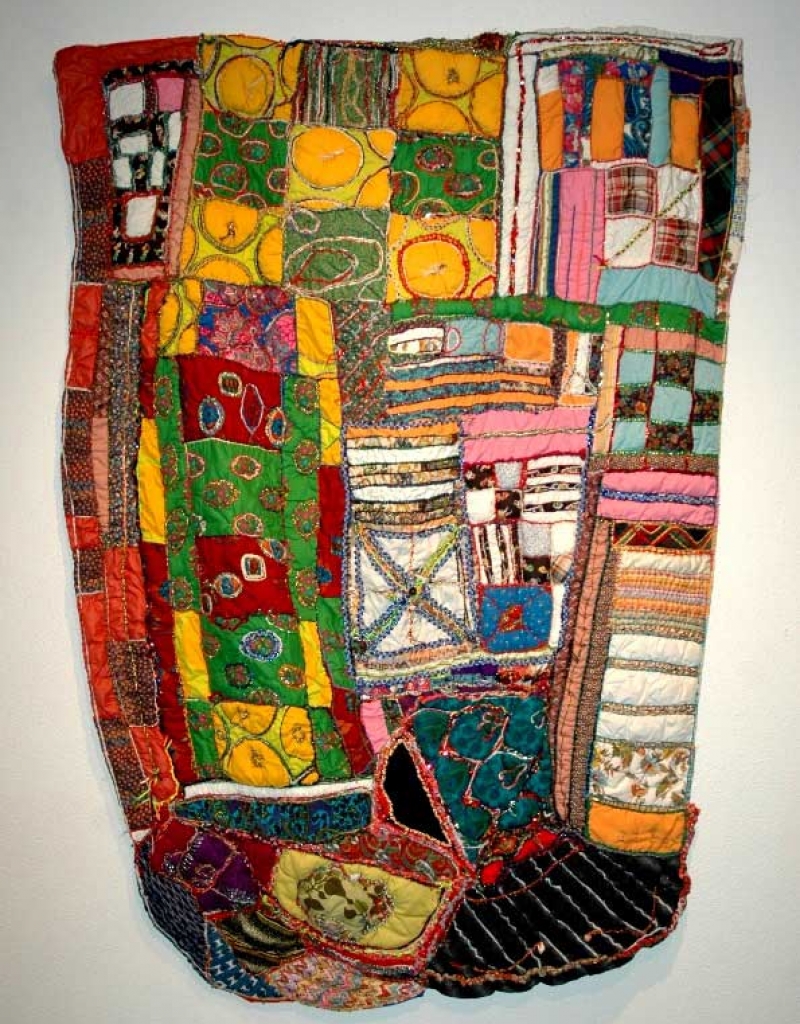
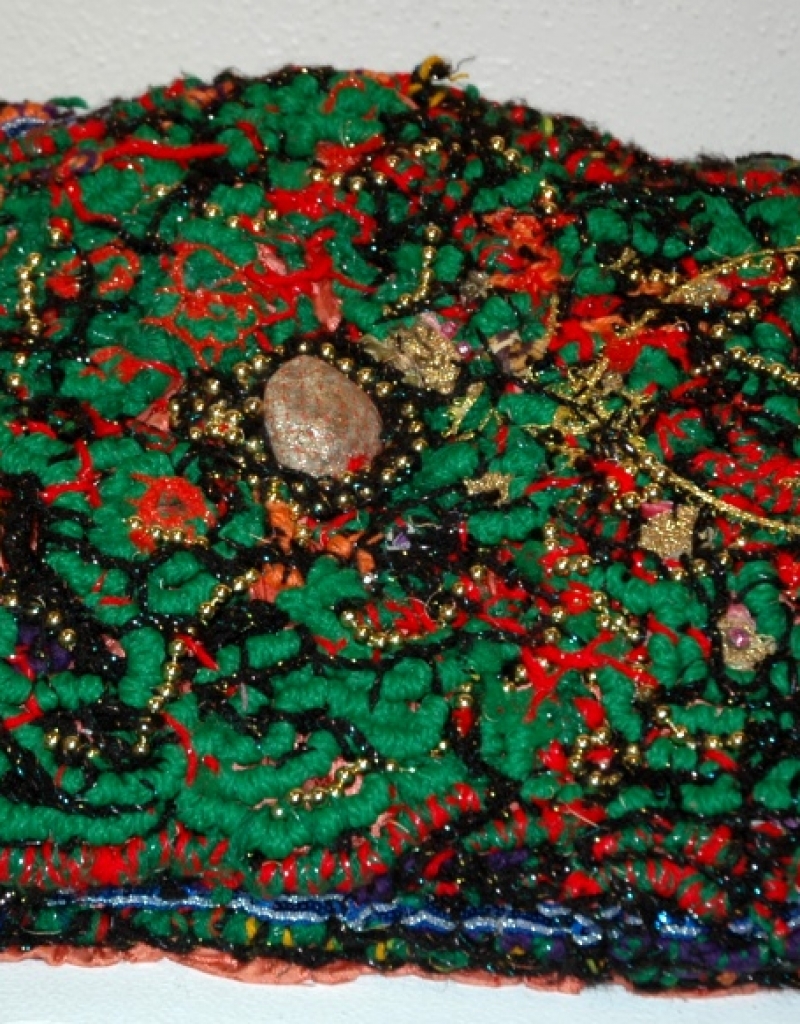
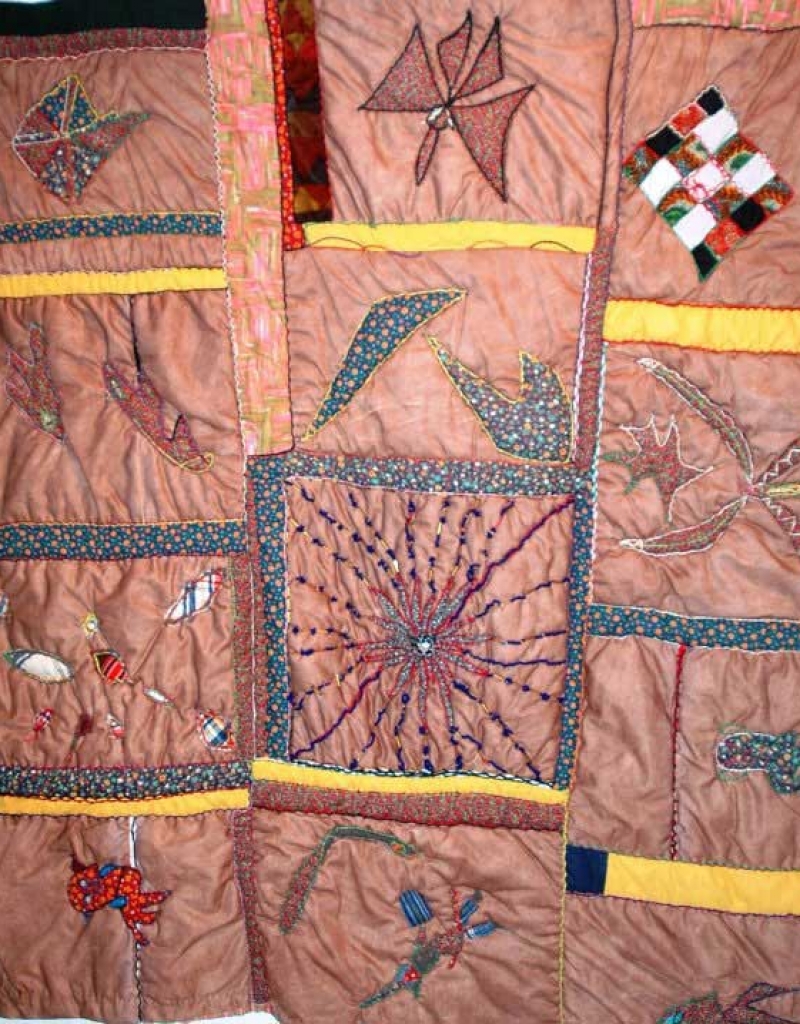
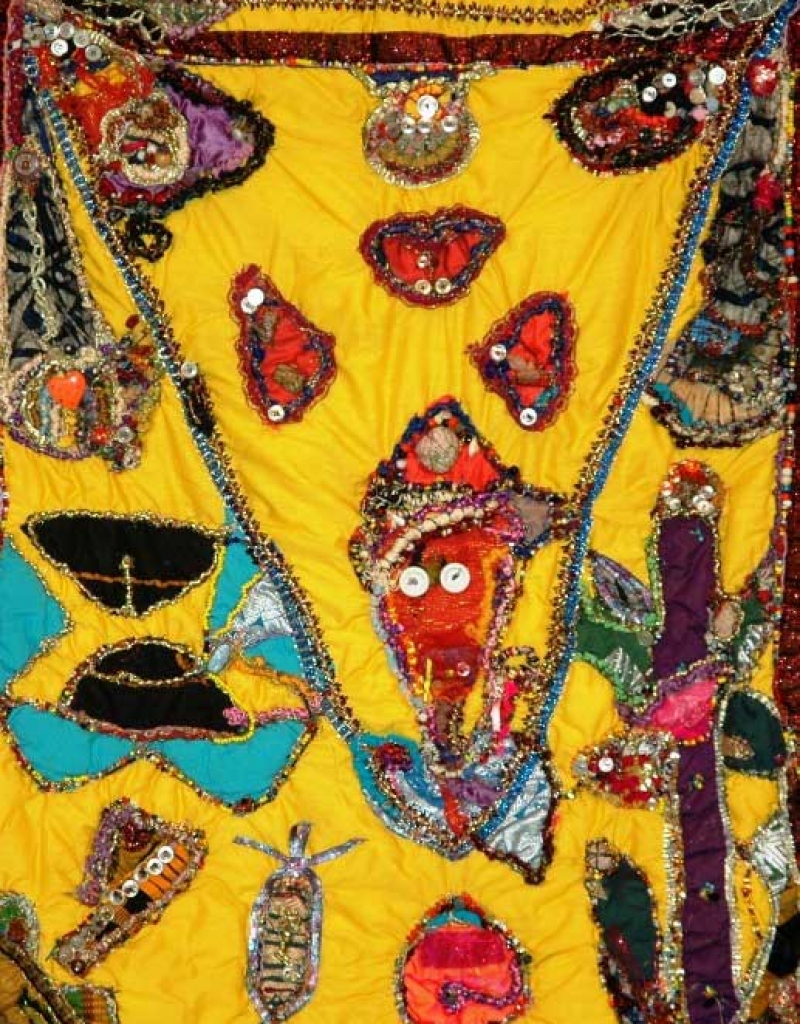
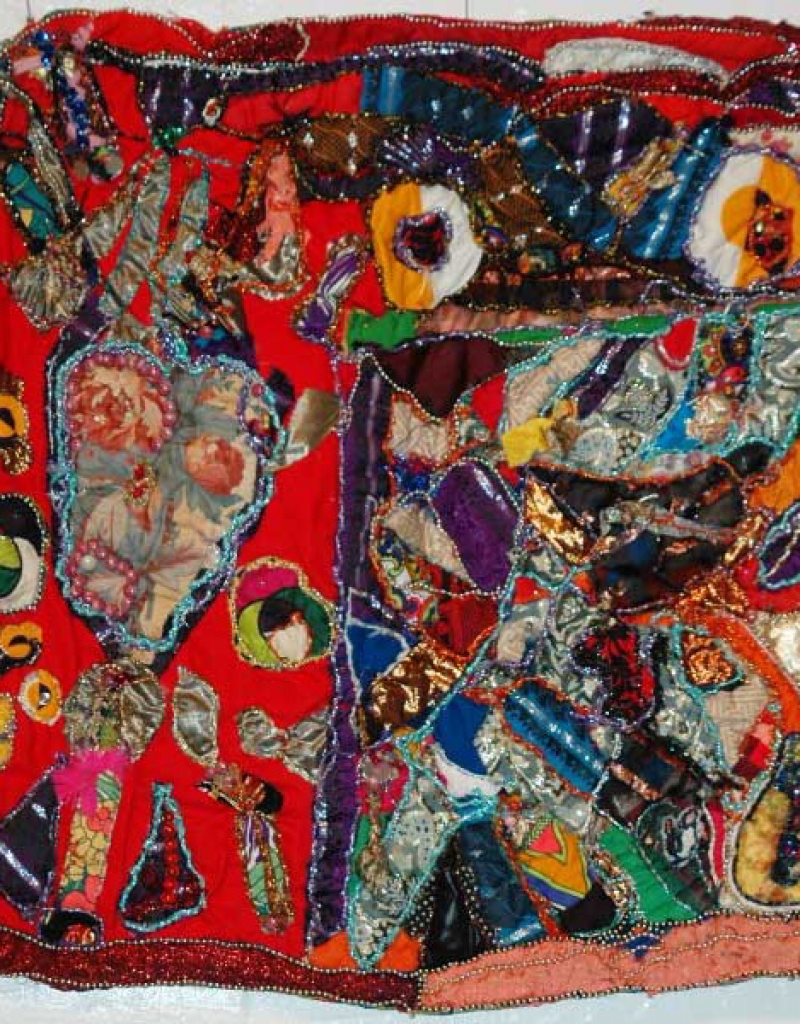


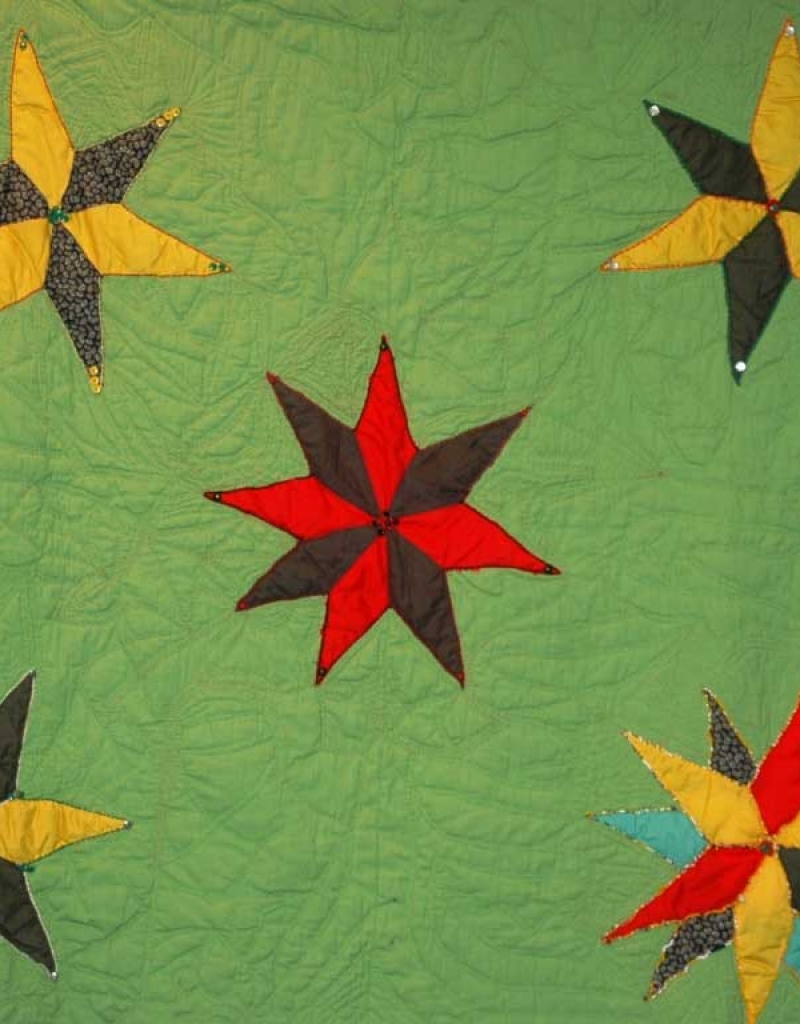
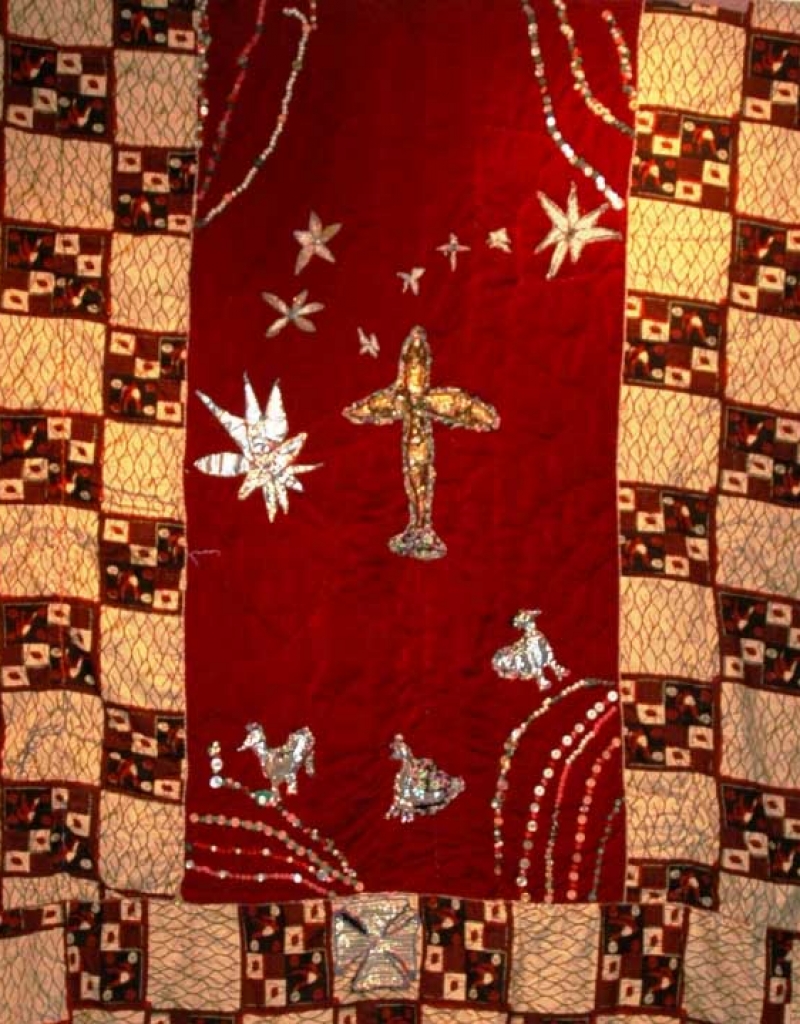
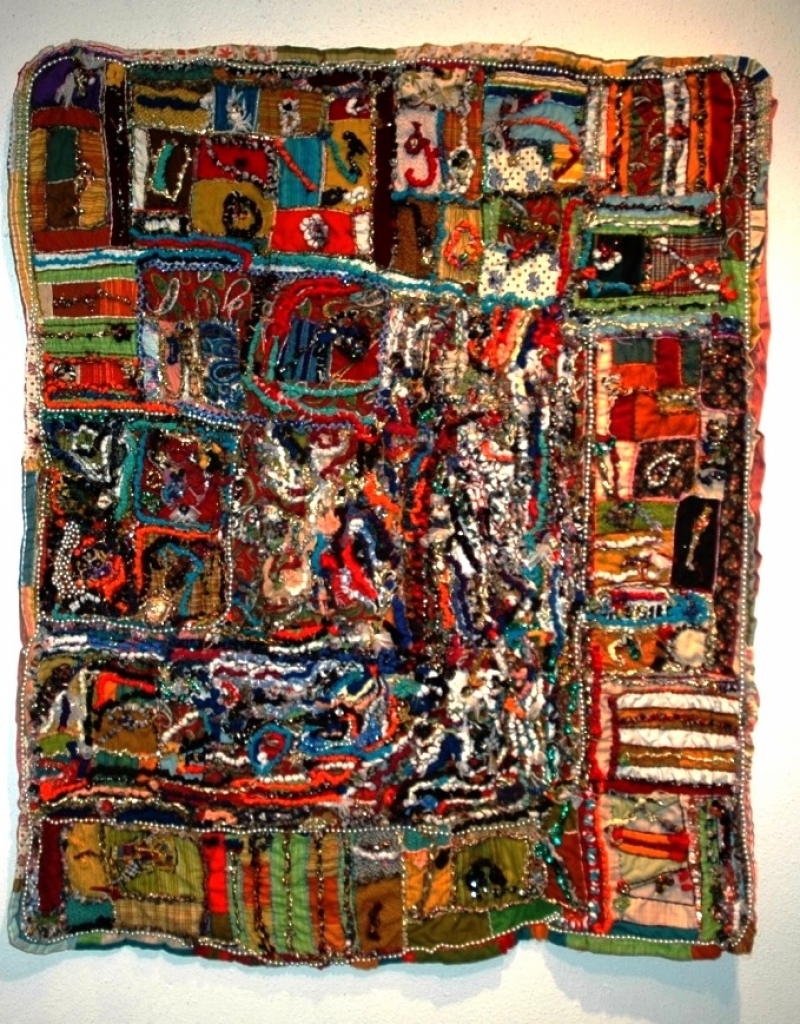
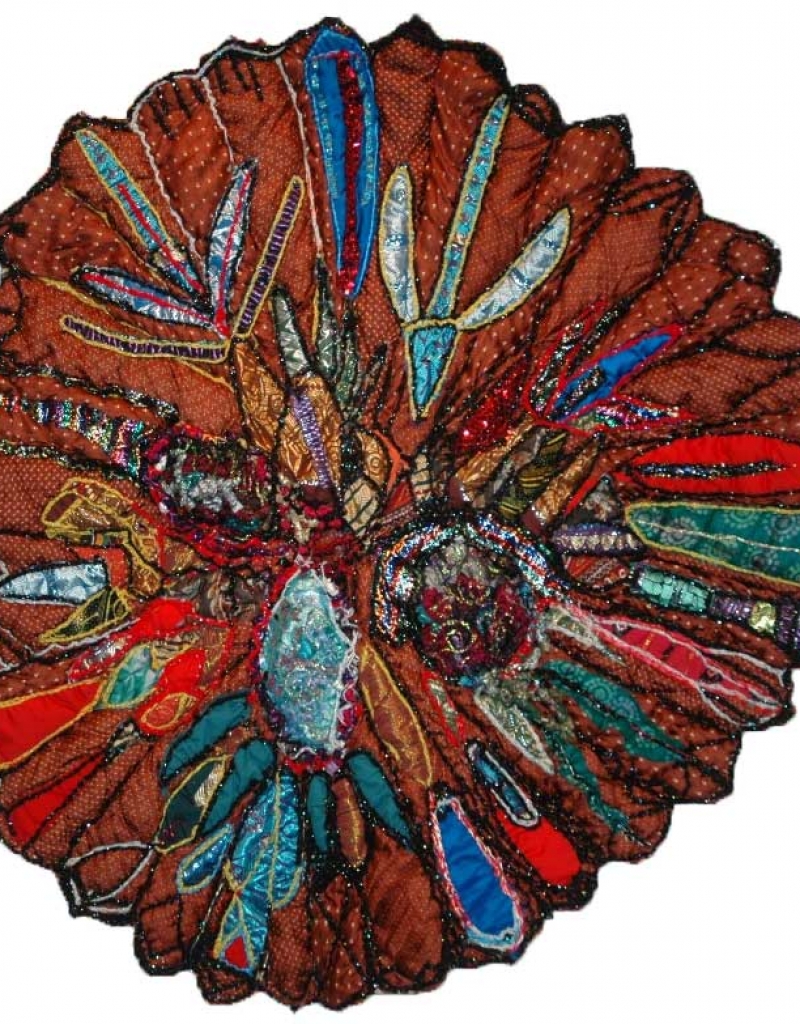
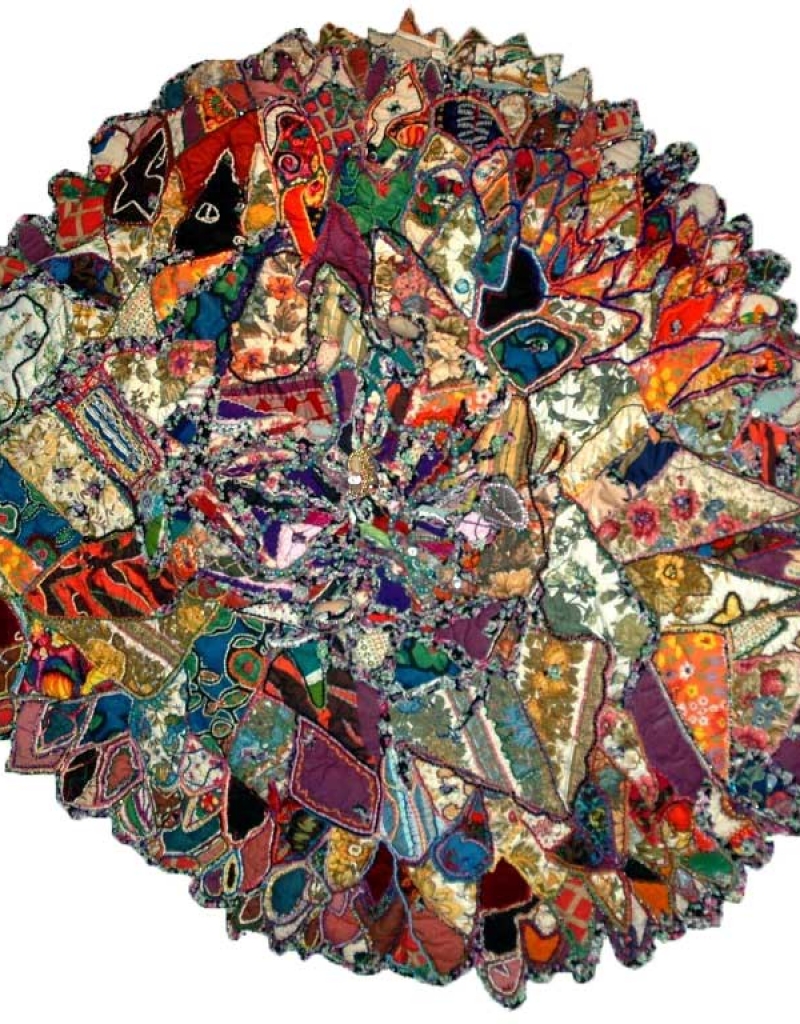
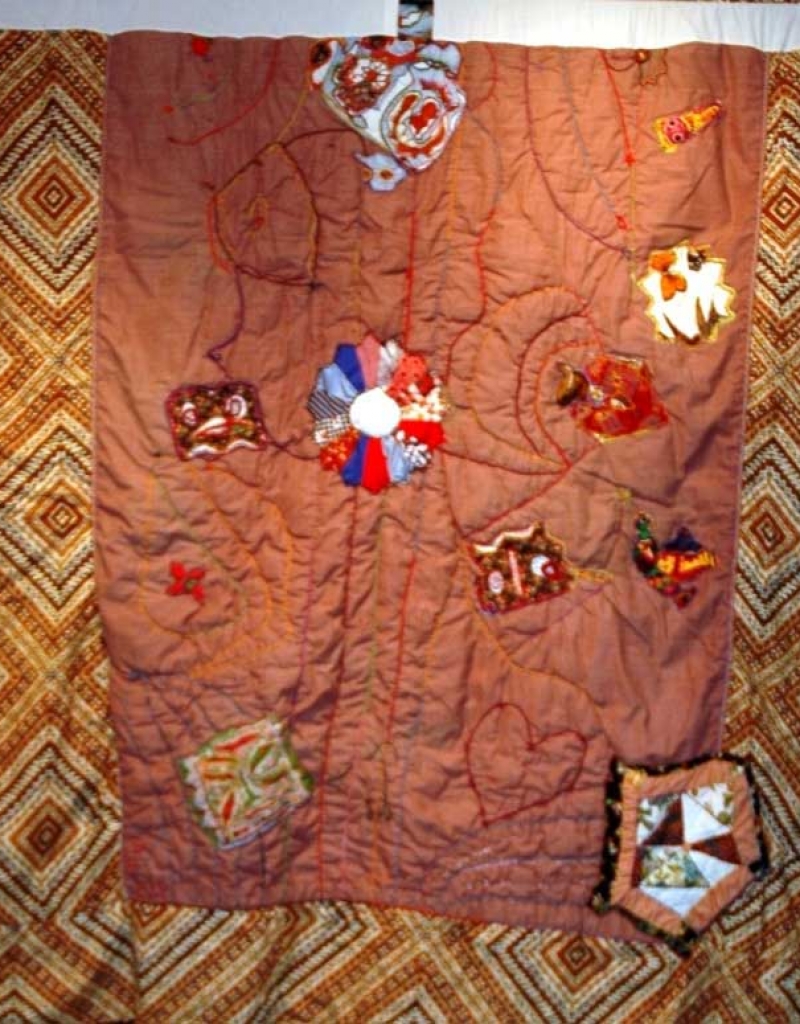
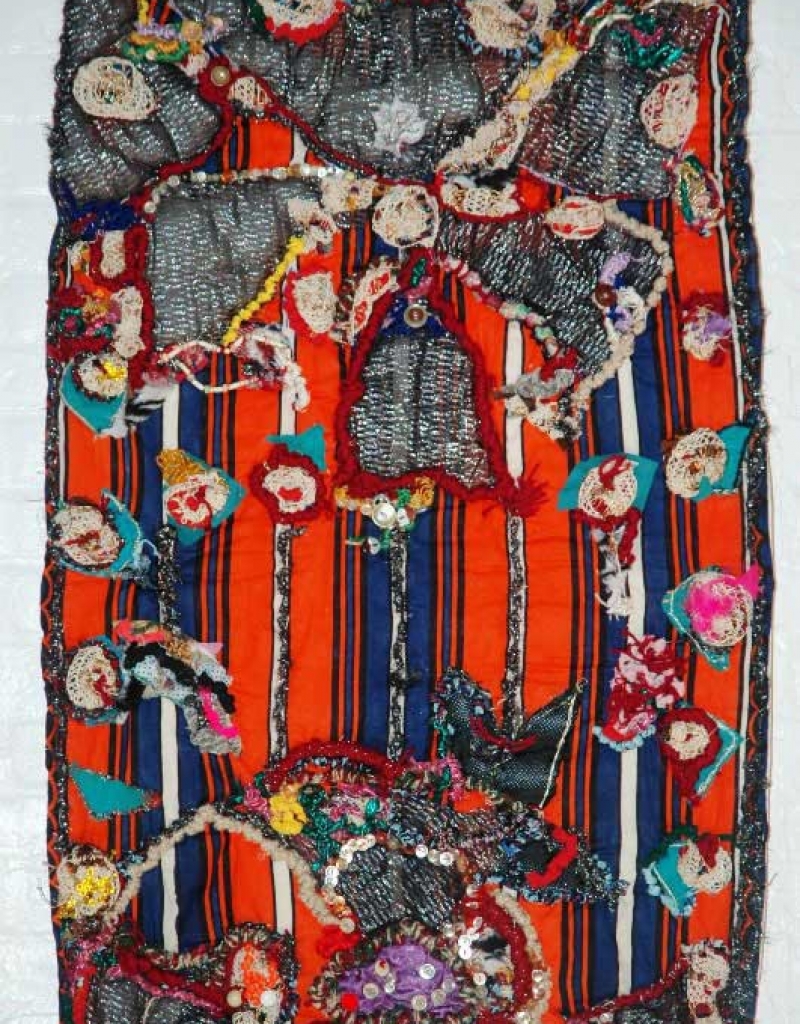

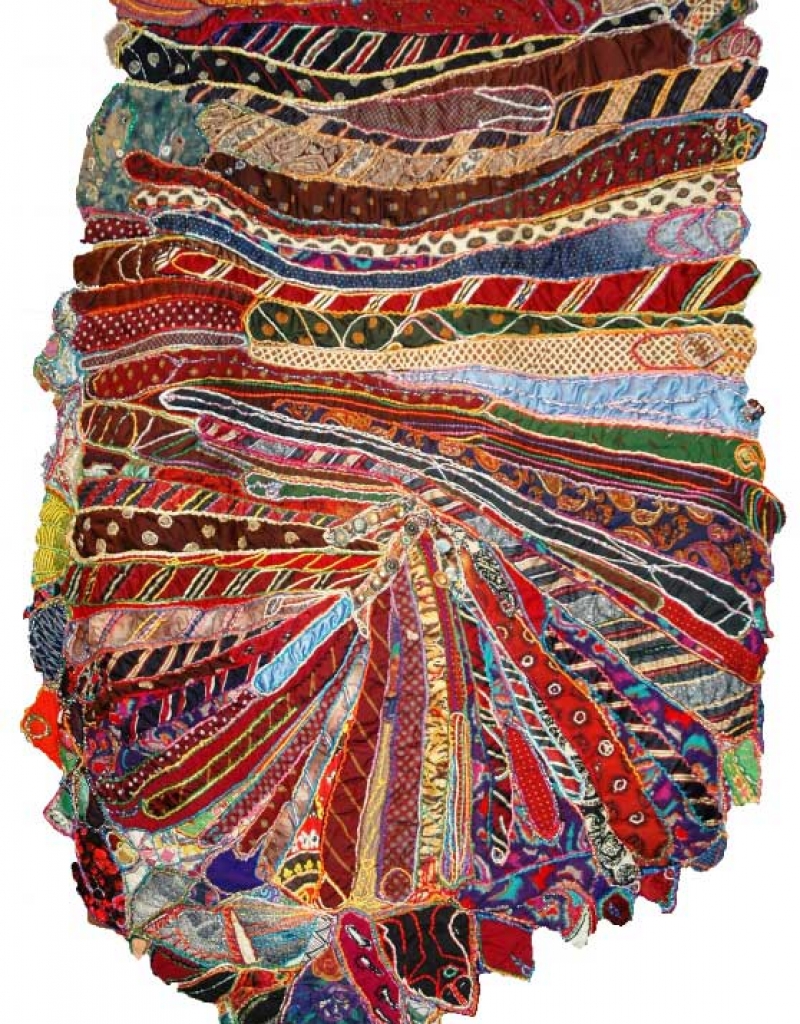
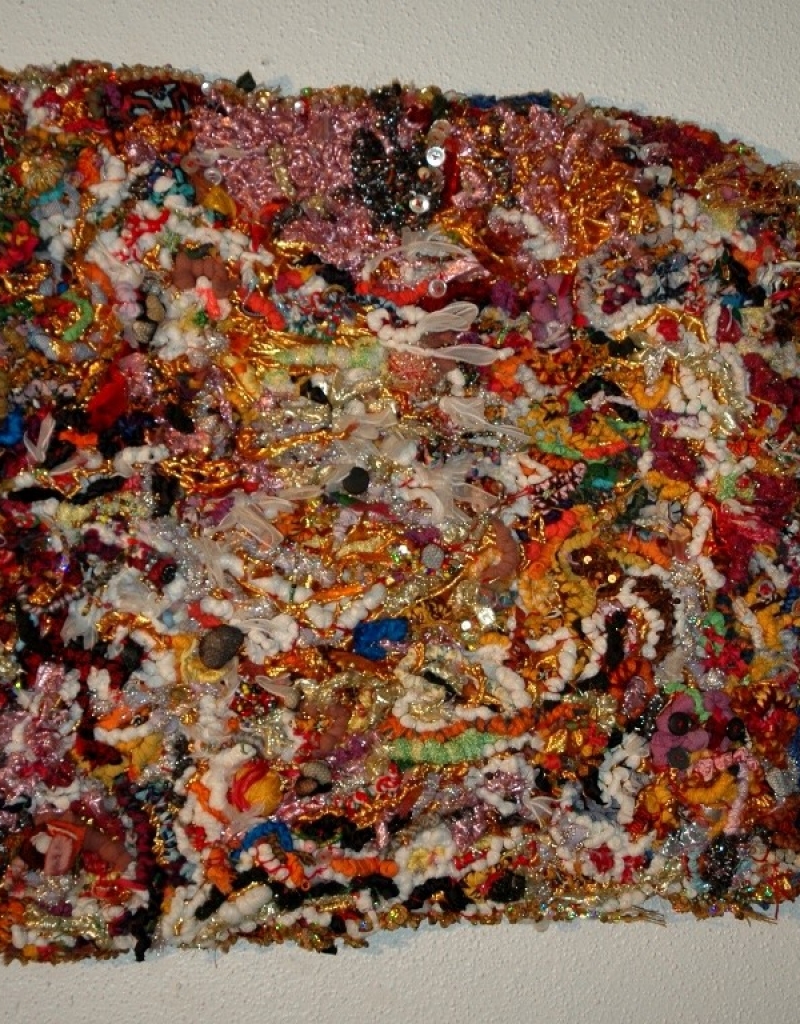
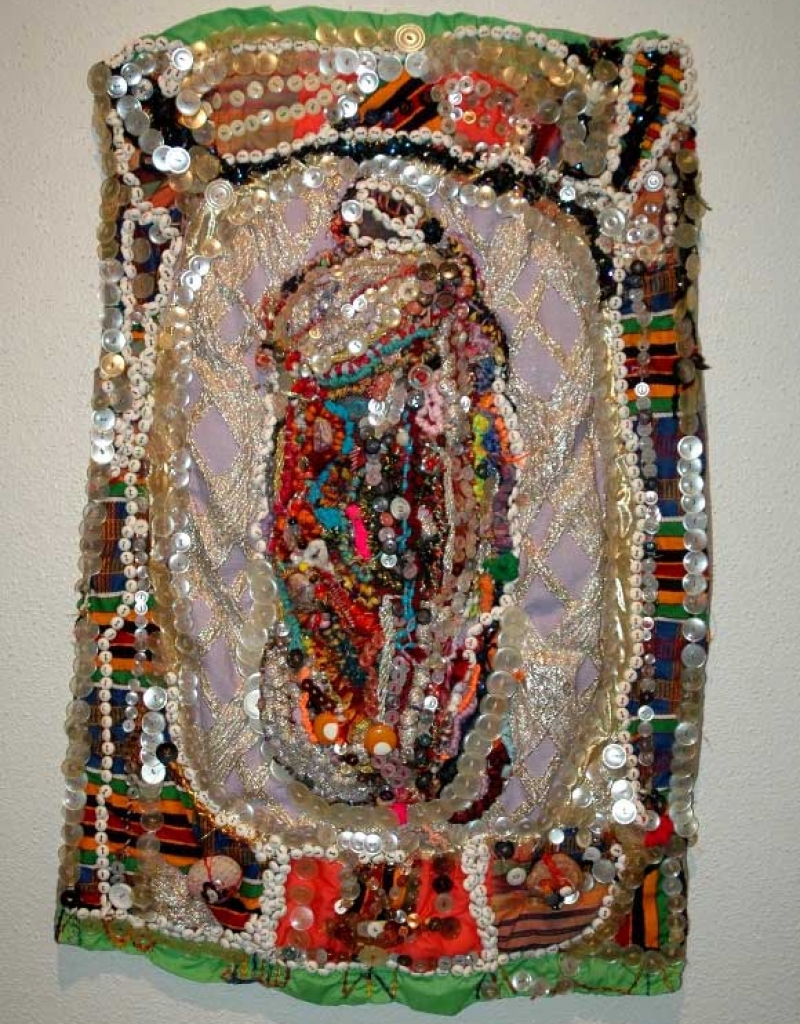
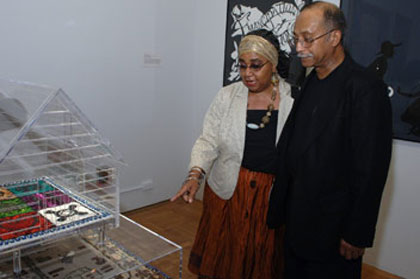
 African American • Karo Courtship by Lisa Green
African American • Karo Courtship by Lisa Green
